从现在放出来的照片看~07款新车概念~
SUV貌似主角
车展主页
http://www2.naias.com/
2007 Jeep Compass

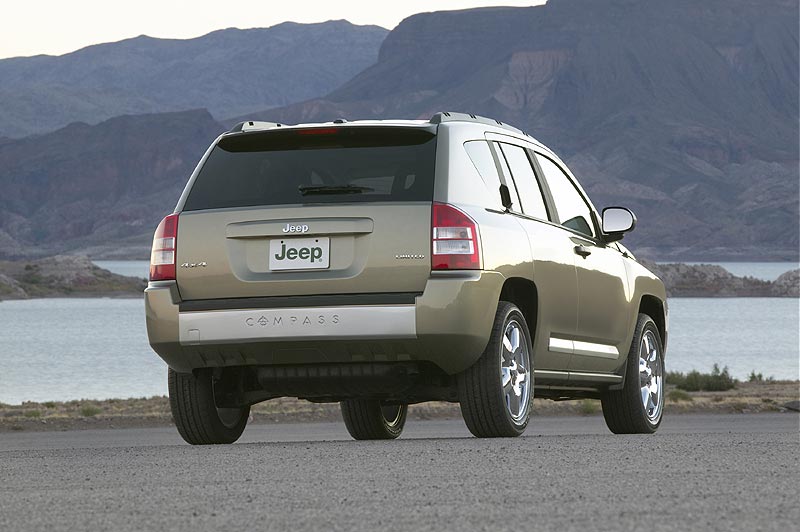
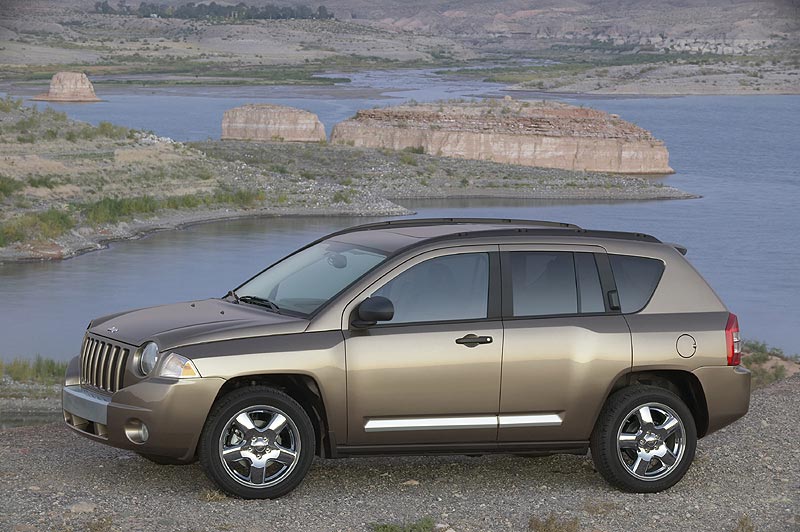
Detroit, Michigan - Jeep unveiled its first front-wheel
drive-based compact SUV on Monday. Based on the Compass concept vehicle first introduced at the 2005 International Motor Show (IAA) in Frankfurt, the 2007 Jeep Compass “combines the packaging and functionality of a sport-utility vehicle (SUV) with the performance, handling, fuel economy and price of a compact car or small pickup”, says the company.
“Jeep Compass will compete in the compact SUV segment, which is expected to grow considerably in the next decade,” said Mike Accavitti, Vice President-Marketing, DaimlerChrysler Canada. “Research indicates this segment, which has already doubled since 1990, is expected to grow to almost 14% of the market in Canada over the next ten years.”
Featuring a fully independent suspension and available with front-wheel drive or on-demand all-wheel drive, the Compass has a standard 172-horsepower 2.4-litre 4-cylinder ‘world’ engine with dual Variable Valve Timing (VVT) on both intake and exhaust camshafts, which helps optimize the torque curve at all speeds. Transmissions are a standard five-speed manual and optional Continuously Variable Transaxle with an available AutoStick feature that allows for manual control with the simulation of six stepped gears. The CVT contributes to a fuel economy improvement of 6-8 percent compared with a traditional 4-speed automatic.
A 2.0-litre turbo diesel engine will be available for markets outside North America.
An optional on-demand all-wheel drive system includes a “Lock” mode to lock torque split 50/50 front/rear. The AWD system includes Brake Traction Control, driver-controlled three-mode Electronic Stability Program (ESP), Brake Assist, Electronic Roll Mitigation and anti-lock brakes with rough-road detection. Compass’ standard four-wheel anti-lock brakes provide a 60-0 mph dry pavement stopping distance of 38 metres (125 ft.).
The Compass’ interior features:
* Standard side-curtain air bags
* Optional Boston Acoustics premium sound system with two articulating speakers packaged in the liftgate. When the liftgate is open, the speakers can swing down to face rearward for tailgating and other activities
* Available dual purpose, self-recharging removable cargo lamp, which is mounted in the headliner above the cargo area and can snap out of the bezel to serve as a flashlight
* A sliding centre armrest moves forward 8 centimetres to accommodate shorter drivers. The armrest lid includes a unique flip pocket for storing a cell phone or an MP3 player
* Available 110-volt outlet in the centre console powers small electronics
* Available fold-flat front passenger seat creates a table-like surface for versatility
* Available 60/40 rear seats both fold flat and recline 12 degrees
* Vinyl load floor in the rear cargo area is both washable and removable
* YES Essentials fabric – an easy-care, soil-repellant and anti-microbial textile protects seats from stains, odors and discolouration
* Production of the 2007 Jeep Compass begins in the second quarter of 2006 at the newly refurbished Belvidere, Illinois plant. Its ‘world’ engine is built by GEMA in
* Dundee, Michigan. GEMA is owned equally by DaimlerChrysler, Mitsubishi and Hyundai.
Volvo C30 design concept to debut at Detroit show
Göteborg, Sweden - The Volvo C30 Design Concept, a four-seat coupe with a glass tailgate, will make its world debut at the North American International Auto Show in Detroit next week. It is an indication of what the new production Volvo C30 will look like when it is unveiled in Paris in September 2006.
Reminiscent of the Volvo Safety Concept Car introduced in Detroit in 2002, the C30 has angled headlamps, a wide, low grille, contrasting colours, horseshoe-shaped taillight pattern and glass tailgate. Designed for customers who rarely require the rear seat, the C30’s luggage space is designed for everyday loads but can accommodate much more cargo when the seats are folded flat. The vehicle uses a 2.4-litre inline five-cylinder turbocharged engine, delivering 260 hp and 258 lb-ft of torque, with a six-speed manual transmission. The package is rounded out with 19-inch aluminum wheels, Pirelli Corsa tires and four-piston Brembo brakes.
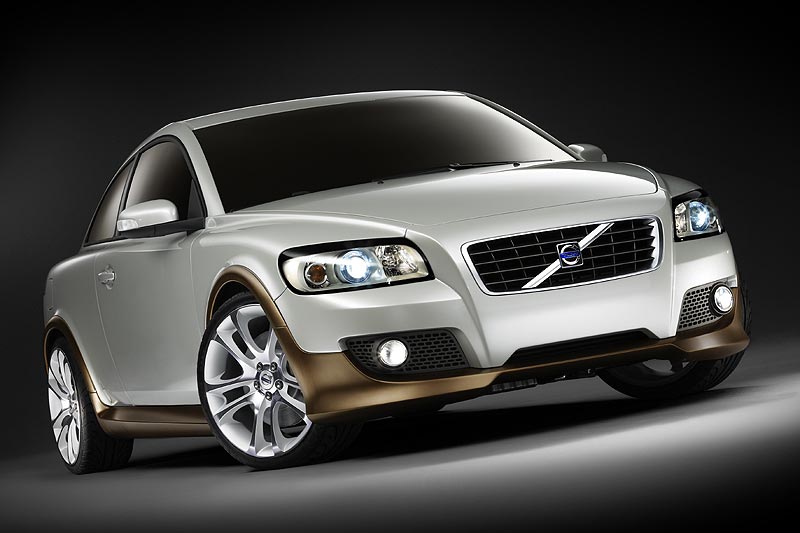
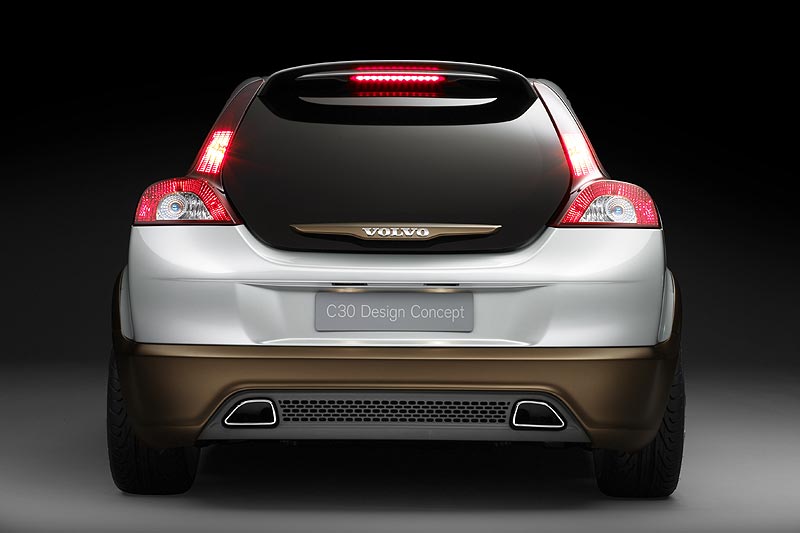
2007 Chevrolet Tahoe Hybrid
Detroit, Michigan – Chevrolet introduced a new hybrid version of the full-size 2007 Tahoe SUV that combines cylinder deactivation technology with a new two-mode gasoline-electric hybrid powertrain to produce a 25% improvement in fuel economy.
2007 Chevrolet Tahoe Hybrid
Click image to enlarge
“The Chevrolet Tahoe Two-mode Hybrid combines the functionality and comfort of a full-size SUV with a two-mode full hybrid system that optimizes fuel efficiency in both city and highway driving, the way most Americans use their vehicles,” said Tom Stephens, group vice president, GM Powertrain.
GM, BMW and DaimlerChrysler are co-developing the two-mode full hybrid system that will leverage automatic transmission technology and electronic controls in an integrated system that can be used with both gas and diesel engines.
The two-mode system is patented hybrid technology with two modes optimized for city and highway driving. In the first mode, at low speed and light loads, the vehicle can operate in three ways: electric power only, engine power only or in any combination of engine and electric power. When operating with electric power only, it provides all the fuel savings benefits of a full hybrid system. Leaving the engine shut off for extended periods of time and moving under electric power at low speed is key to reducing fuel consumption in heavy stop and go traffic.
The second mode is used primarily at highway speeds. In addition to electric assist, the second mode provides full eight-cylinder engine power when conditions demand it, such as when passing, pulling a trailer or climbing a steep grade. The second mode integrates sophisticated electronic controls, such as Active Fuel Management (cylinder deactivation), cam phasing, and late-intake valve closure, allowing even more efficient engine operation.
A sophisticated controller determines when the vehicle should operate in either mode of the two-mode drive system. Input from the controller determines the necessary torque for the driving conditions and sends a corresponding command to the engine and electric motors. The engine and electric motors transfer torque to a series of gears in the transmission, which multiply torque similar to a conventional automatic transmission to propel the vehicle. But unlike conventional continuously variable transmissions, the two-mode full hybrid’s electrically controlled system uses no mechanical belts or bands. Shifts between the two modes are synchronous, which means no engine speed changes are necessary for the mode shift to occur, resulting in ultra smooth accelerations.
The 300-volt battery pack provides electric power for the system, and while it is larger than a typical automotive battery, it is designed to fit in the vehicle without compromising passenger space.
Design Manager David Smith and his team gave Chevy Tahoe Two-mode Hybrid a distinctive look. The Tahoe Two-mode Hybrid is 10 mm lower in the front and touts additional aerodynamic features compared to the non-hybrid Tahoe. Special features, including prominent hybrid badges and a Glacier Gold exterior finish, complete the look.
The Tahoe Hybrid will go on sale next year as a 2008 model, along with the GMC Yukon Two-mode Hybrid. Pricing and production volumes have not been announced.
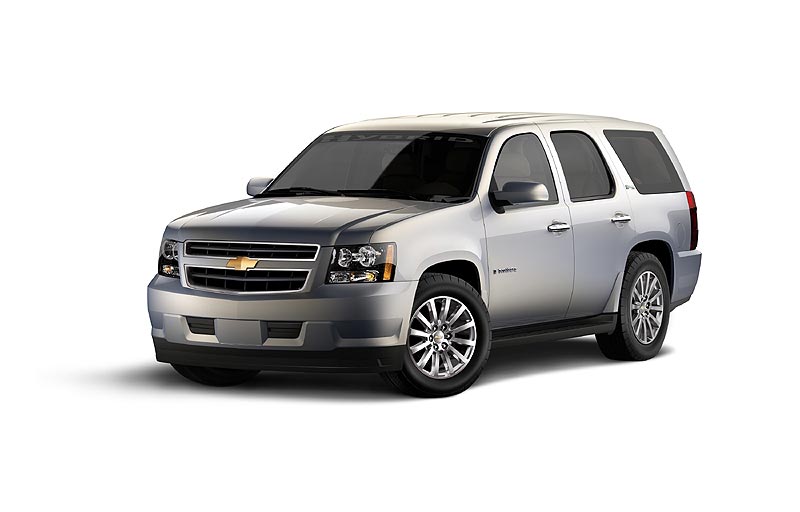
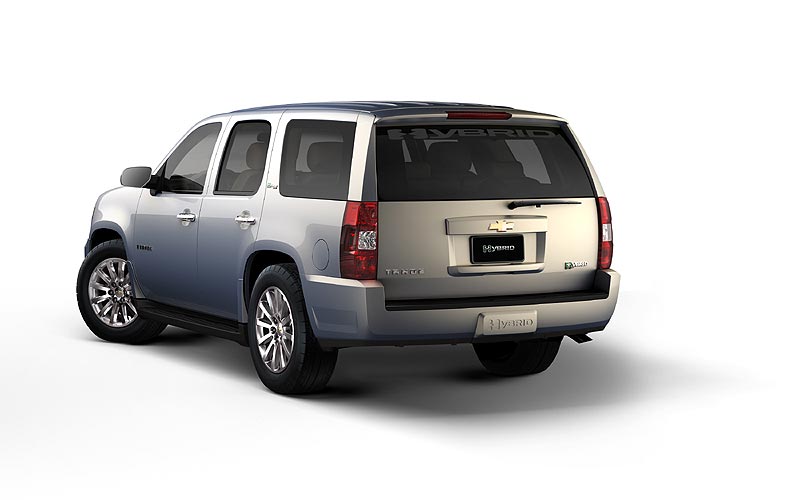
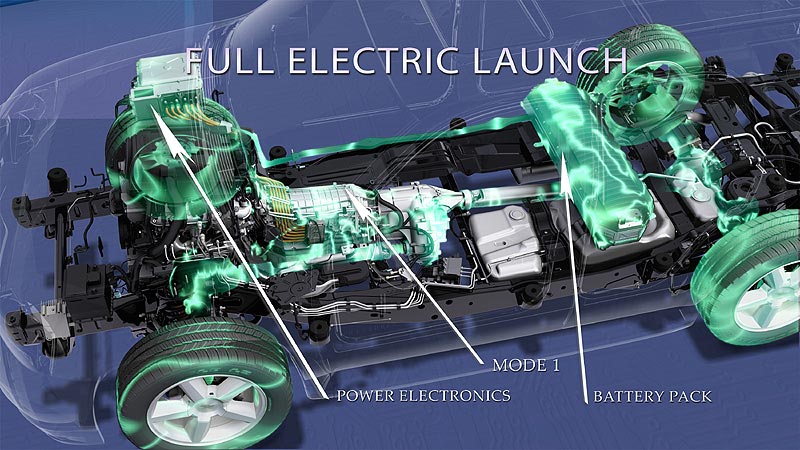
2007 Saturn Vue Green Line
Detroit, Michigan – Touted as the lowest-cost hybrid-powered SUV in the market, Saturn unveiled the 2007 Vue Green Line on Sunday. Powered by a new, more affordable hybrid system, the Vue Green Line delivers an estimated 20-percent improvement in fuel economy, depending on driving conditions. It is expected to deliver an EPA estimated 27 mpg (U.S.) in the city and the best highway mileage of any SUV at 32 mpg (U.S.). The Vue’s hybrid system will cost under U.S.$2,000, and the full vehicle price will start at less than U.S.$23,000, said the automaker.
2007 Saturn Vue Green Line
2007 Saturn Vue Green Line
2007 Saturn Vue Green Line
Click image to enlarge
The Vue Green Line uses electronic controls and a unique electric motor/generator mated to a 2.4-litre four-cylinder engine and four-speed automatic transmission. The hybrid design provides additional power from the motor/generator during acceleration and allows increased fuel economy through engine shut-off at idle, fuel cut-off during deceleration and the capability to capture electrical energy through regenerative braking.
The new hybrid system also is designed to automatically maintain full accessory functionality, including climate control, when the vehicle is stopped, so that hybrid operation is transparent to the driver and passengers. The Vue Hybrid allows an appropriate balance between fuel economy and comfort by providing a system with two driver-selectable operating modes. An economy mode favours fuel economy by limiting the affect of air conditioning, while the other mode favours maximum passenger comfort and defogging performance.
The Vue Green Line’s 2.4-litre engine and hybrid powertrain is rated at a combined 170 horsepower compared to the 143 hp provided by the 2.2-litre engine in the conventional four-cylinder Vue. GM says this maintains the vehicle’s sporty feel, with acceleration better or equal to many non-hybrid SUVs.
The Vue Green Line will be available in the summer of 2006. It is based on the recently restyled 2006 Vue SUV.
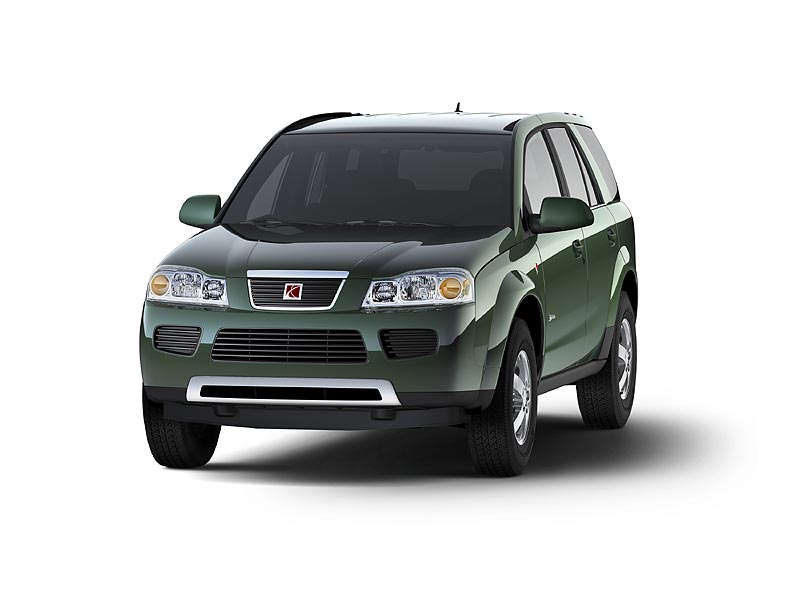
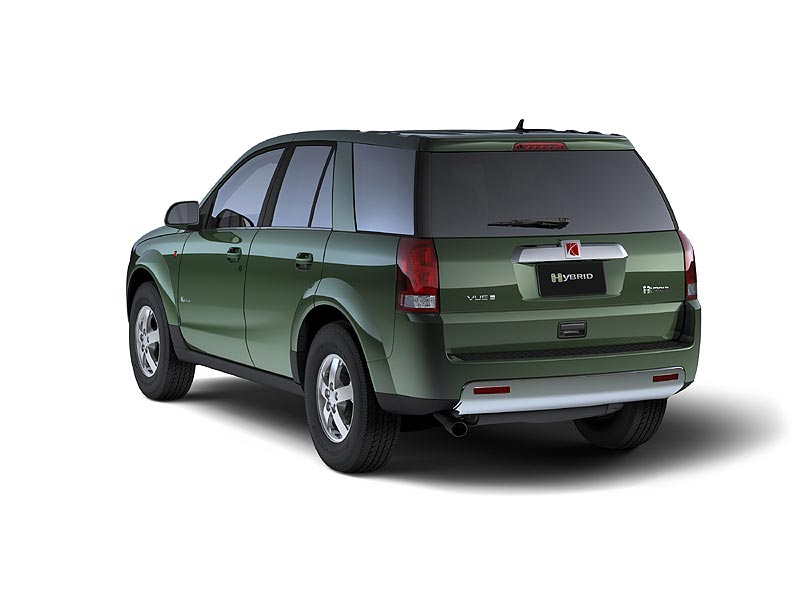
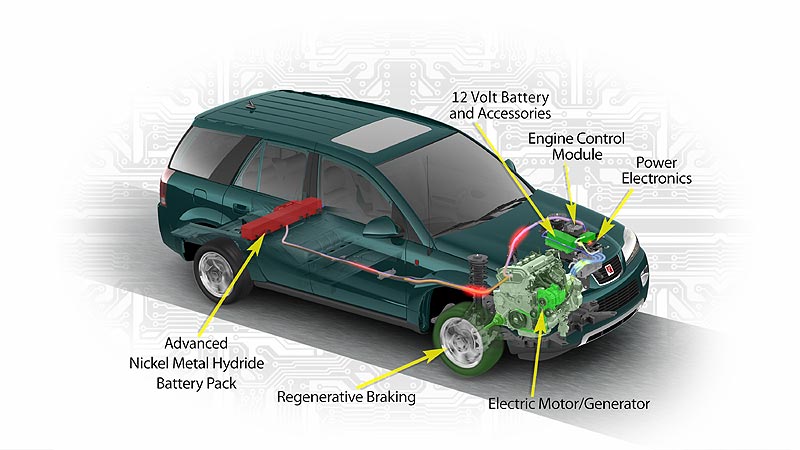
2007 Ford Edge CUV combines utility with car-like handling
Detroit, Michigan – In the United States, crossover utility vehicles (CUVs) are the fastest-growing segment of the auto market. Ford says two distinct consumer trends have helped fuel the explosive growth of the CUV segment: car buyers seeking more spacious and flexible interiors along with the security of all-wheel drive, and traditional SUV buyers seeking more maneuverable and fuel-efficient vehicles that still make an active lifestyle possible.
2007 Ford Edge
2007 Ford Edge
2007 Ford Edge
Click image to enlarge
The new 2007 Ford Edge is an attempt to capture these ‘crossover’ customers. The Edge CUV is based on the mid-size Fusion sedan platform, with an independent suspension tuned to make the Edge handle as much like a car as possible. “We tuned Edge to be very responsive, offering drivers a confident ride without compromising the fun-to-drive quotient,” said Elaine Bannon, Edge chief vehicle engineer.
For all-weather traction, its optional all-wheel-drive (AWD) system runs in front-drive but can send power to the rear wheels when needed. Paired with optional AdvanceTrac traction/stability control the AWD system can transfer torque front-to-rear and side-to-side. AdvanceTrac is also available with roll-over stability control,
The Edge is powered by a new 250 horsepower 3.5-litre V6 that meets stringent ultra-low emission vehicle (ULEV) II regulations and is mated to a 6-speed automatic transmission.
The Edge seats five adults with best-in-class headroom and legroom for the second row, says Ford. The 60/40 reclining split second row folds to provide a level load floor and an optional folding front-passenger seat creates an extended load floor as long as eight feet inside. Each rear seat can be folded manually using a single-hand release or automatically with an available EasyFold electro-mechanical remote release accessible from the rear cargo area. A large Panoramic Vista moonroof is optional.
Unique interior features include a large centre console with a removable divider and tray to organize the space both vertically and horizontally for everything from laptop computers and handbags to coins and MP3 players; four power points, three within the driver’s reach; an MP3 audio jack; small slots moulded into the side of the console keep phone and MP3 cords neat and organized; a ticket clip, two pen holders and a tissue holder.
The Edge is big on cupholders: a 20-ounce-cup holder is included in each front-door map pocket, along with juice box holders in the rear door pockets, two super-size-cup holders in the centre console and two in the rear armrest.
Safety features include front, side and curtain airbags.
The Edge goes on sale in the fourth quarter of 2006, and will be built at Ford’s Oakville, Ontario plant.
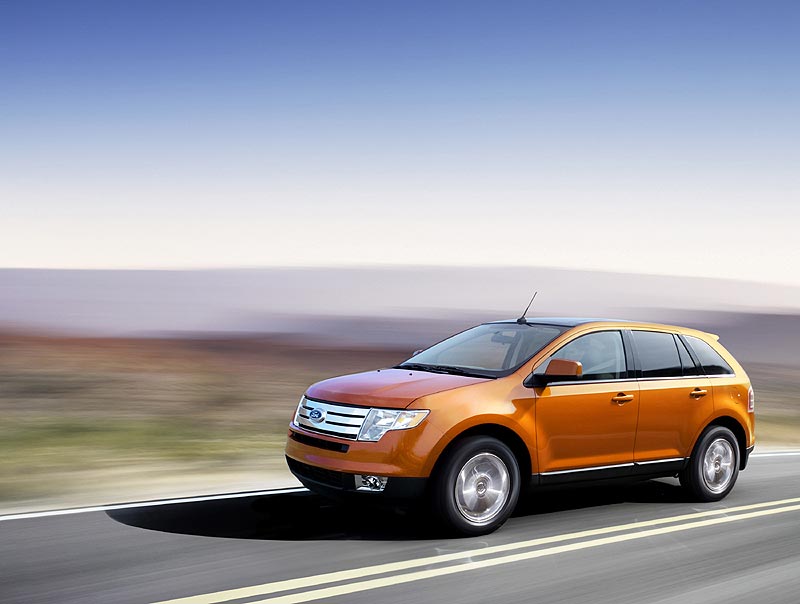
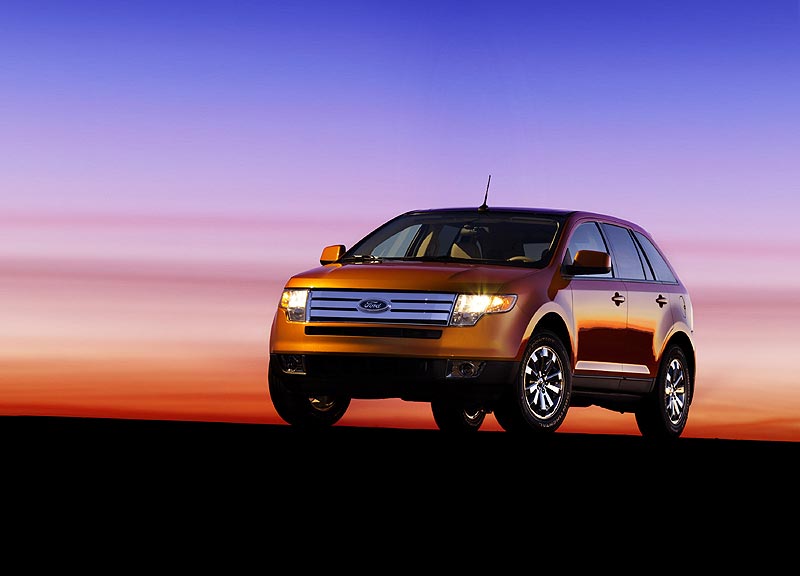
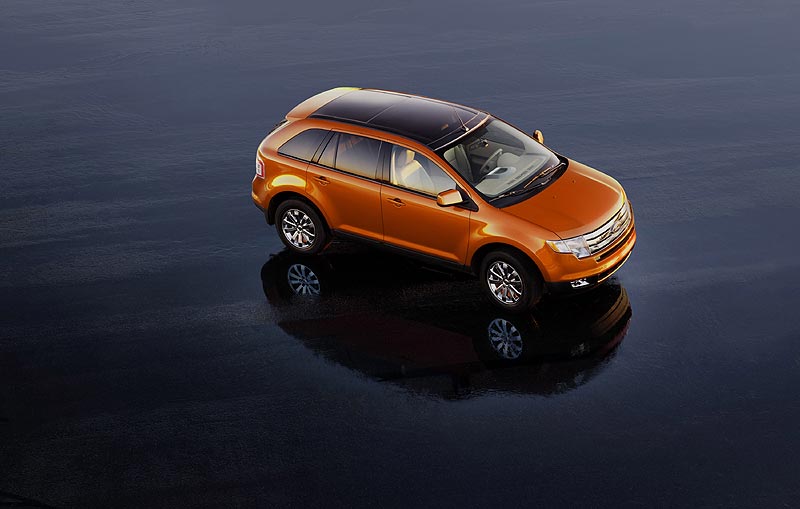
Ford Reflex
Detroit, Michigan - Ford unveiled the Ford Reflex concept today, an environmentally-friendly small sporty car with a fuel-efficient diesel-electric hybrid powertrain that delivers up to 65 mpg (U.S.), according to the automaker.
The Reflex has such unique features as solar panel-powered headlights, a flexible interior made from synthetic and regenerated materials, sound insulation made from scrap Nike running shoes, integrated child seat, and inflatable rear safety belts.
The Reflex features an electric motor on the rear axle in addition to the hybrid propulsion system on the front axle. The rear motor provides all-wheel-drive capability. Energy is stored in a new-generation lithium-ion battery pack, using the same technology found in cell phones. Its Ford-patented battery-charging headlight system improves fuel economy by using the sun’s power to charge the on-board batteries, while capturing and reusing the daylight at night.
Ford Relfex
Click image to enlarge
The vehicle’s low-voltage circuitry is exposed beneath the glass roof and rear hatch, and the roof also features self-powered solar fans that cool the car when parked.
Inside, its mesh seat covers are transparent and sheer, offering maximum airflow for comfort and style. At the touch of a button, the instrument cluster controls appear in a cool blue hue as light-emitting diodes (LEDs) switch on. Located in the centre console, touch-screen technology helps reduce driver distraction. Shift paddles that control the 6-speed semiautomatic transmission are tucked behind the steering wheel.
The back seat offers unique small-car flexibility. A second-row “love seat” can accommodate two children or one adult. With a push of a button, a divider bar raises through the seat bottom, transforming one seat into two.
Rear-seat passengers also have the luxury of watching their favourite movie on two small flat-screen monitors mounted to the lower portion of the front seatbacks. Like the front seats, the rear seats feature mesh wrapped around a lightweight inner frame.
Advanced safety technologies include inflatable safety belts, BeltMinder for backseat passengers, side air curtains, a love seat fitted with an integrated rear-facing child safety seat, and a “baby cam” in the headliner.
“Ford Reflex is a small car that doesn’t feel small,” says Freeman Thomas, director, North American Strategic Design. “It is a gorgeous sporty car that delivers guilt free performance with a hybrid engine. And thanks to its innovative approach to the interior, it has space for growing families.”
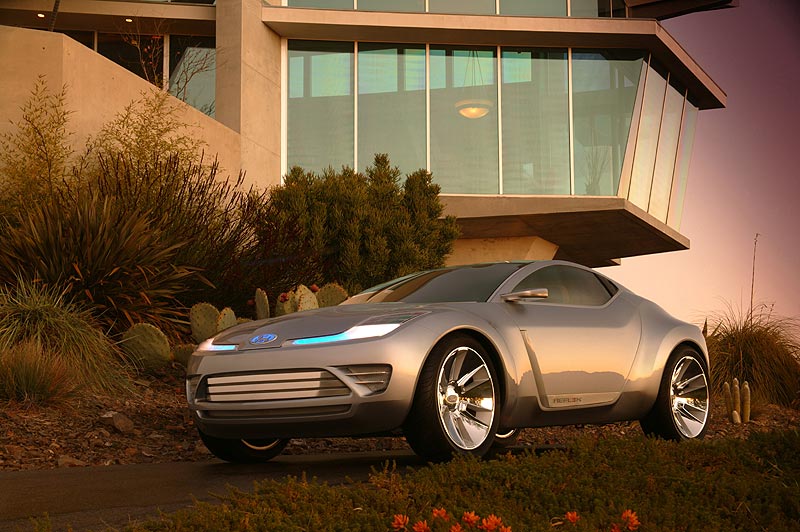
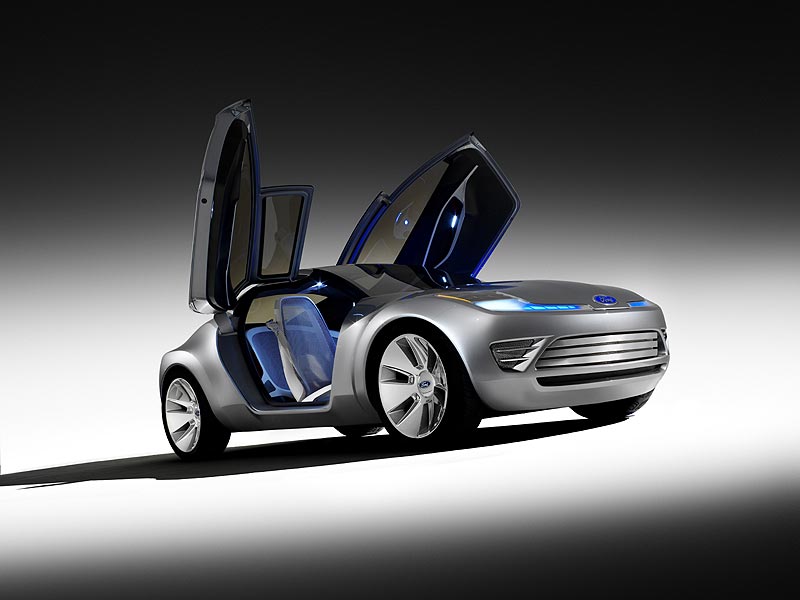
Dodge Challenger concept: muscle car revival
Detroit, Michigan – No doubt inspired by the success of the retro-styled Mustang, Dodge unveiled a Challenger concept Sunday that’s a dead-ringer for the 1970 Challenger – at least from a distance.
Dodge Challenger concept
Dodge Challenger concept
Dodge Challenger concept
Click image to enlarge
More Photos!
“The 1970 model is the most sought after by collectors. But instead of merely recreating that car, the designers endeavoured to build a Challenger most people see in their mind’s eye — a vehicle without the imperfections like the old car’s tucked-under wheels, long front overhang and imperfect fits,” said Tom Tremont, Vice President- Advanced Vehicle Design."
The 2006 Challenger concept car has a 116-inch wheelbase, 6 inches longer than the original car, and it is 2 inches wider. Its wheels and tires are much bigger: front P255/40R 20-inch and rear P265/45R 21-inch. They’re set flush with the bodyside giving the car a muscular stance. The Challenger concept is a genuine two-door hardtop: it has no B-pillar. Compared to the original Challenger, the greenhouse is longer, the windshield and backlite faster, and the side glass narrower. Unlike the original, the Challenger concept is a genuine four-passenger car with a decent back seat.
Under the retro-styled hood with its genuine diagonal air intakes is a 6.1 litre V8 Hemi which puts out 425 hp @ 6000 rpm and 420 ft.-lbs of torque at 4800 rpm and drives the rear wheels through a 6-speed manual transmission. DaimlerChrysler claims a 0 to 60 mph time of 4.5 seconds, and a standing ¼ mile time of 13 seconds. Modern disc brakes pull it down from 60 mph to 0 in 133 ft. Top speed? 174 mph.
There’s little doubt the Challenger concept would handle better than the original Challenger. The rear-wheel drive platform was developed from the Chrysler 300/Dodge Charger/Dodge Magnum and includes a fully independent short/long-arm suspension, unlike the solid rear axle of the original Challenger, and includes much larger, wider, stickier radial tires.
As with the original car, the instrumental panel sits high, intersected on the driver’s side by a sculpted trapezoidal cluster containing three circular in-line analog gauge openings.
“We designed the in-your-face gauge holes to appear as if you are looking down into the engine cylinders with the head off,” said Alan Barrington, principal interior designer. These are flanked outboard by a larger circular “gauge” that is actually a computer, allowing the driver to determine top overall speed, quarter-mile time and speed, and top speed for each of the gears."
Although the flat-section bucket seats of the original Challenger didn’t offer much support for aggressive driving, the front seats in the Challenger concept car have hefty bolsters much like those found on Dodge’s SRT series cars. The trim covers’ horizontal pleats or “fales” provide just a hint of that “70’s” look.
Other retro styling touches in the interior are the circular steering wheel hub and pierced silver spokes, and a floor console with a “pistol grip” shifter for the six-speed manual “tranny.”
No word on production possibilities.
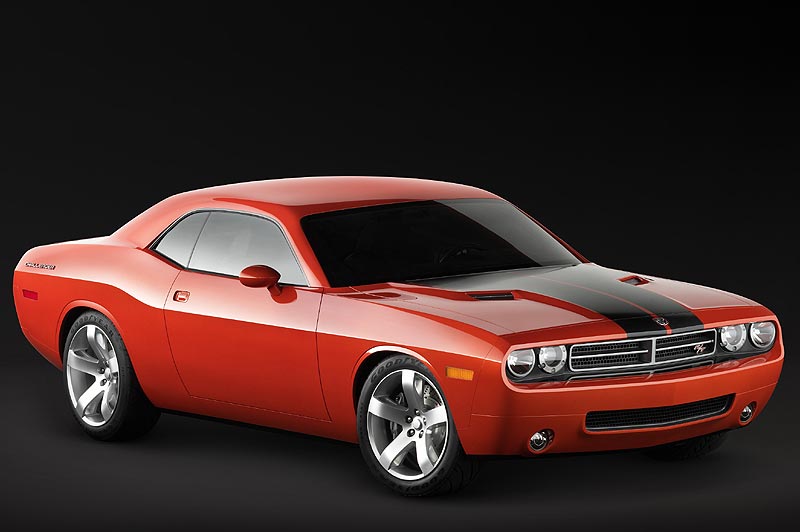
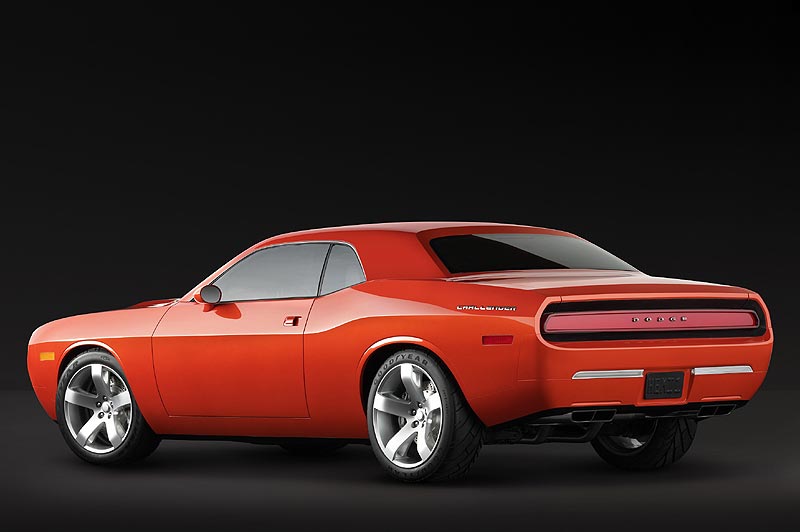
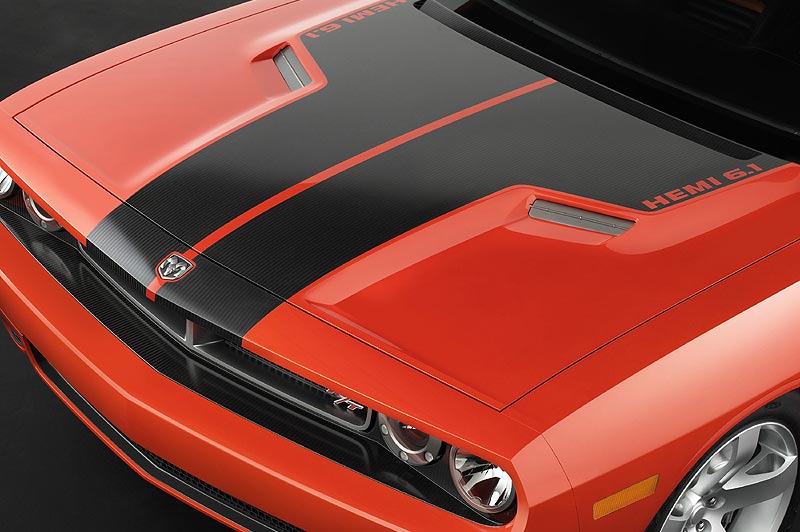
2007 Ford Shelby GT500 – memories made new
Detroit, Michigan – There never was any doubt that a Shelby version of the most recent Mustang would see production – it was just a matter of when. Even though anybody under 35 wasn’t
even born when race-driver/tuner Carroll Shelby created his most famous Mustang hot rods, the Shelby name still has the power to create a stir in the hearts and wallets of Ford enthusiasts of all ages.
2007 Ford Shelby GT500
Once again, Carroll Shelby teamed up with Ford – in this case the Special Vehicles Team (SVT) – to help create the 2007 Ford Shelby GT500, a modern copy of the late ‘60s Shelby GT 500KR, or King of the Road.
True to the original car, the 2007 Shelby GT500 will be available both as a coupe/fastback and as a convertible. And like the original cars, the fastback will have racing stripes, but the convertible won’t.
“When Carroll was developing the original GT350 and GT500, he wanted to build the most powerful, most capable Mustangs of his day,” said Hau Thai-Tang, director, Advanced Product Creation and Special Vehicle Team. “Our goal was to build the most powerful, most capable Mustang ever.”
The 2007 Shelby GT500 has a 475-horsepower supercharged 5.4 litre 32-valve V8, 6-speed manual transmission, race-tuned suspension, and four-piston Brembo brakes. The engine is force-fed an air-and-fuel mixture via a “Roots-type” supercharger. The GT500 uses a cast-iron engine block, and from the Ford GT program, borrows aluminum, four-valve cylinder heads, piston rings and bearings. “Powered by SVT” camshaft covers add the finishing touch to the engine.
“It’s one thing to put 450 horsepower in an exotic supercar,” said Shelby. “It’s another to put that much power in something as affordable as a Mustang. The fact that they not only met their goal but pushed on to 475 horsepower is a remarkable achievement.”
SVT engineers retuned and upgraded key chassis components. Improvements include revised shocks, spring rates and upgraded stabilizer bars. The GT500 features a MacPherson strut independent front suspension with Reverse L lower control arms, and a solid-axle, three-link rear suspension with coil springs and a Panhard rod.
To match its power and handling ability, Ford engineers fitted some of the biggest brakes in the business: four-piston Brembo calipers are fitted to 14-inch Brembo vented rotors up front, and 11.8-inch vented discs in the rear. Tires are 255/45ZR high-performance tires in front and 285/40ZR high-performance tires in back. Wheels are 18 inches by 9.5 inches.
Inside, the locations of the speedometer and the tachometer are swapped to provide performance-oriented drivers with a better view of shift points while changing gears. The front seats have additional lateral support for cornering. The leather-upholstered interior is offered in a choice of two colours, Charcoal Black or Charcoal Black and Crimson Red. The charcoal/red offering features Crimson Red seating surfaces and door panel inserts. Cobra snake logos embossed in the seat backs finish the package. The 2007 Ford Shelby GT500 goes on sale in the summer of 2006.
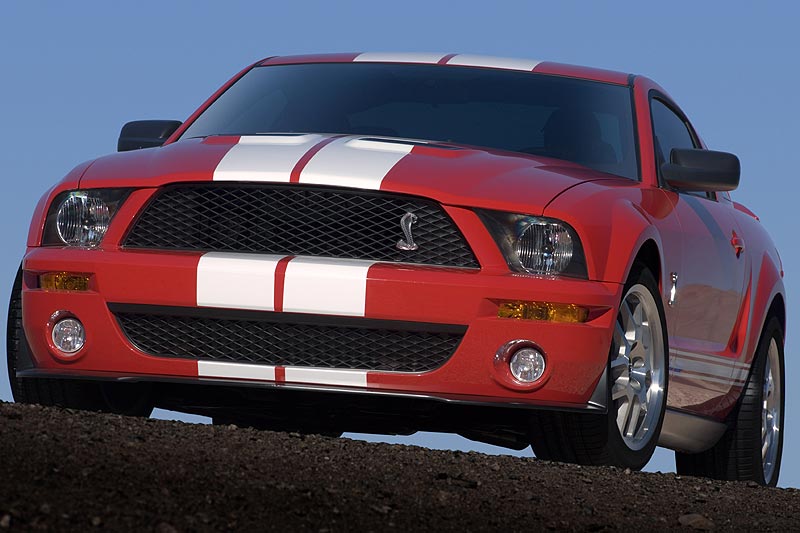
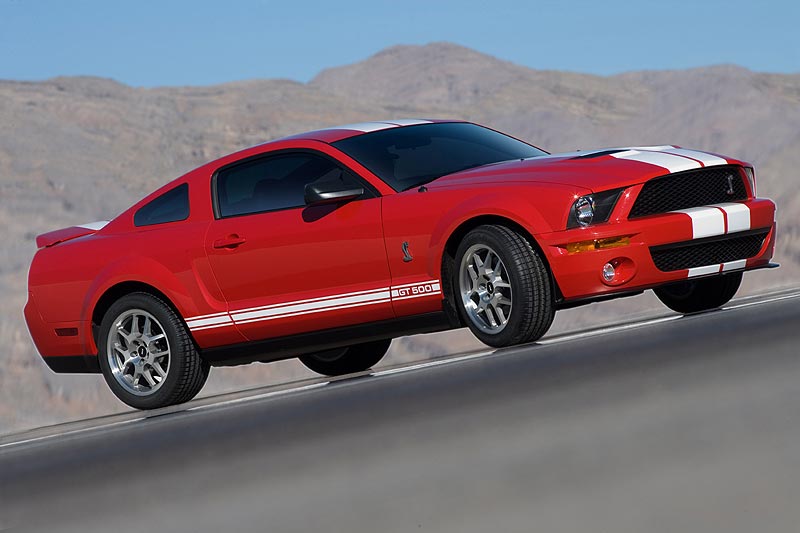
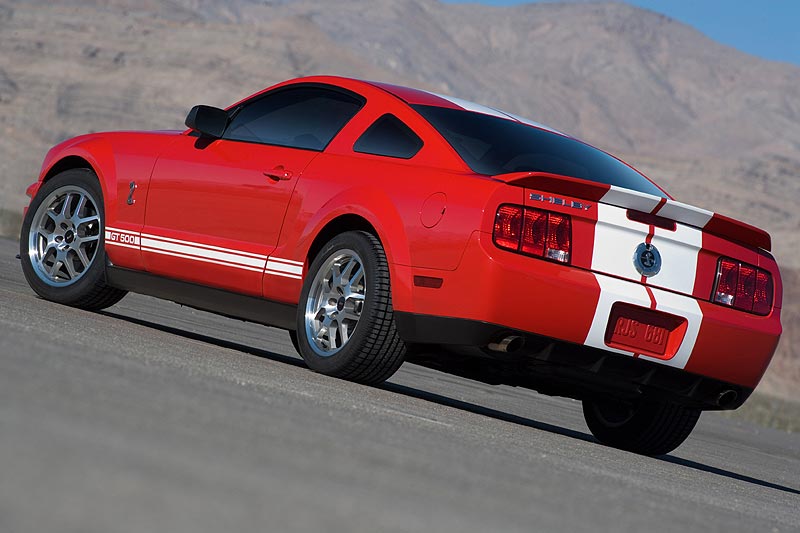
Ford F-250 Super Chief
Detroit, Michigan - Described as the world’s first vehicle with “Tri-Flex fuelling”, the Ford F-250 Super Chief concept has a supercharged V10 engine that will run for 500 miles (805 km) between fill-ups on hydrogen, E85 ethanol or gasoline.
Ford says the tri-fuel flexibility may help pave the way for hydrogen vehicles, as the nation’s ethanol and hydrogen fuelling infrastructure continues to develop.
“The Tri-Flex fuel engine encourages the development of the hydrogen fuel infrastructure for the best future mobility solution,” says Dr. Gerhard Schmidt, vice president, Research and Advanced Engineering. “It also drives the expansion of the domestic ethanol E85 fuel production and availability and, of course, provides our customers the convenience of gasoline until these other fuels become more readily available.”
Running on hydrogen, the supercharged V10 engine provides up to 12 percent fuel economy improvement on an energy equivalent basis versus a non-supercharged gasoline V-10. In addition, when operating on hydrogen, the Tri-Flex V10 generates 99 percent less CO2 emissions than when running on gasoline.
Ford F-250 Super Chief
Click image to enlarge
The transition from hydrogen fuel power to either E85 or gasoline is handled seamlessly through a dashboard-mounted switch and can occur while the vehicle is in operation. Transition from either E85 or gasoline to hydrogen requires that the vehicle be at idle to allow for proper engagement of the supercharger, which only operates when the vehicle is powered by hydrogen.
The concept truck’s styling and its name are inspired by the American Super Chief trains of the nation’s past. The sculpted cowling serves as an air intake for the V10 engine, while pronounced vents exhaust heat from the engine bay. Pronounced flares house the truck’s 24-inch wheels. Ford’s unique frontal crash underride protection system - called BlockerBeam - makes the F-250 Super Chief more compatible with cars.
Based on an F-250 Super Duty with an 8-foot-long bed, F-250 Super Chief designers reallocated 2 feet of bed space for the passenger compartment, which is accessible through center-opening doors.
The F-250 Super Chief’s rear doors can be opened independently of its front doors. An electronic release first extends the rear three-pivot hinges out and slides them back slightly to open the rear doors; an electronic motor pulls them closed.
Ford F-250 Super Chief
Click image to enlarge
At the rear, the tailgate hinges on both sides for greater utility. Inside the bed, a wood-planked bed floor is ribbed with raised metal rub strips for easy cargo loading. In addition, there’s an under-bed storage tray, which can be accessed even when the cargo bed is full.
The cabin is richly appointed in American walnut, brushed aluminum and rich brown leather. The entire roof of the F-250 Super Chief is glass, bisected by a leather-wrapped grid of American walnut, allowing vista views. The walnut, outlined in aluminum, lines the truck’s floors as well, carrying through the design execution of the pickup bed. Viewed from above, through the glass roof, the floor is smooth and integrated from cabin to the bed.
The rear seats allow for relaxation aided by ottomans that deploy from the floor space. The seats have separate cushions for the seat bottoms and the backs, as well as individual integrated armrests that are not part of the rear door panels.
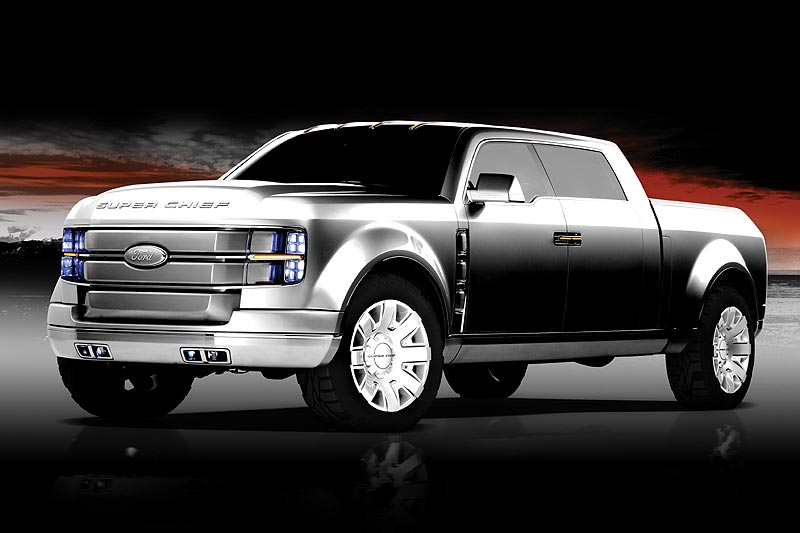
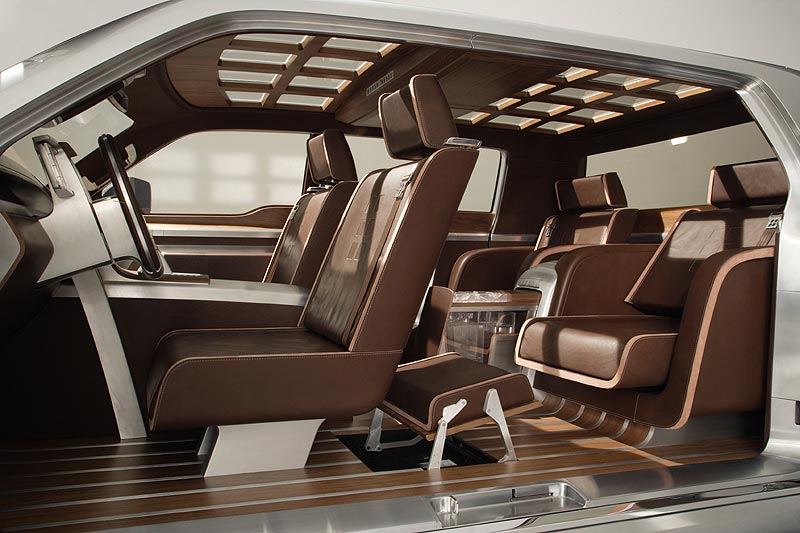
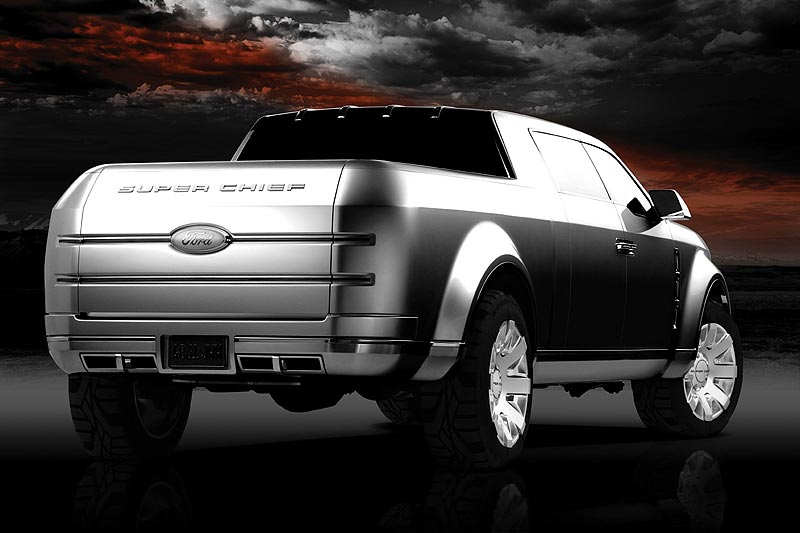
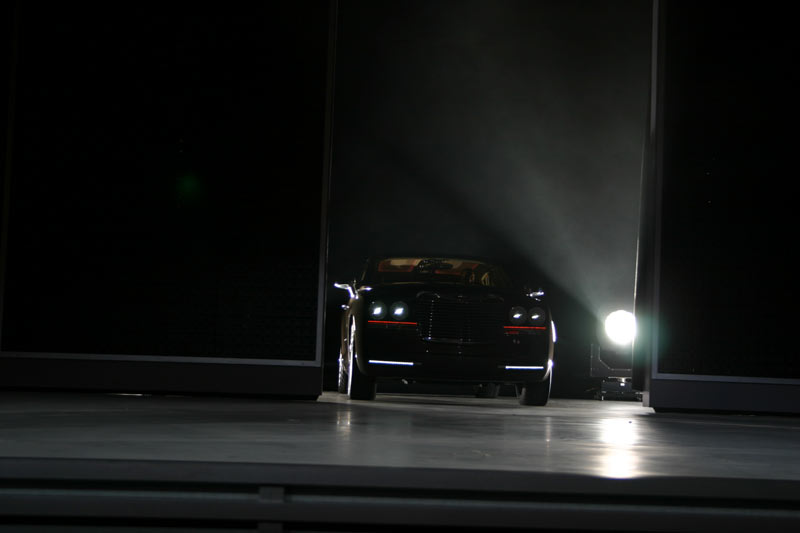
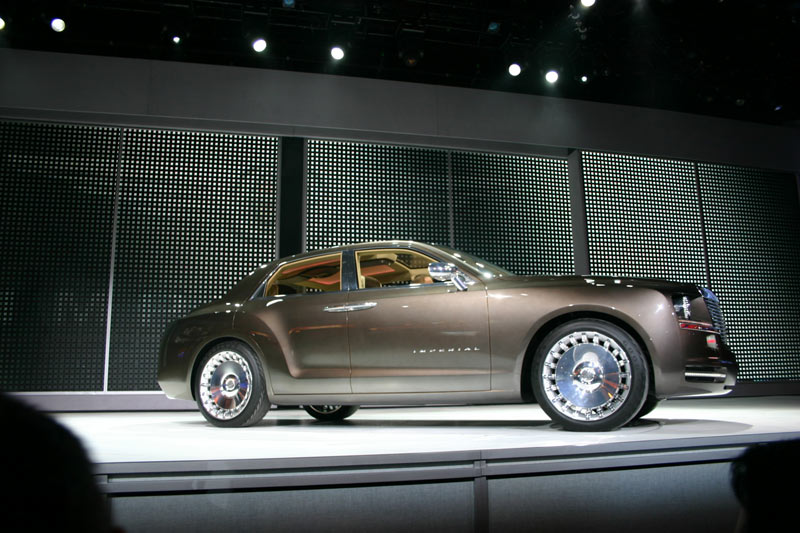
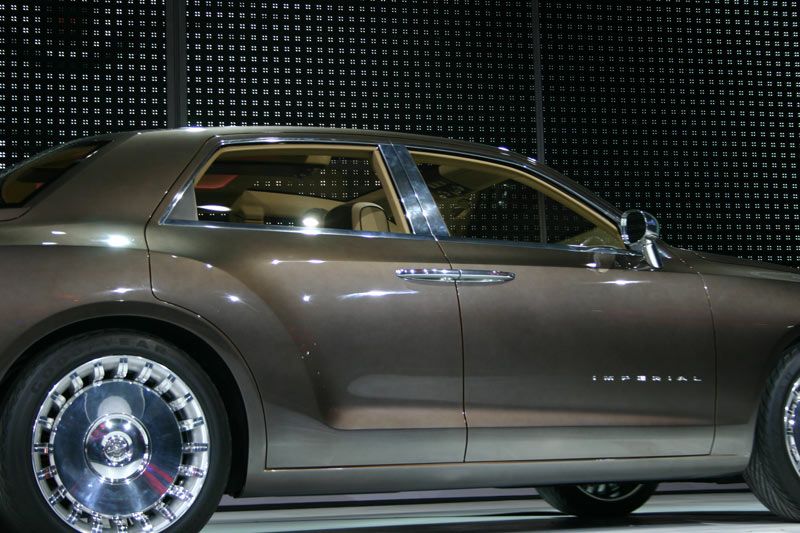
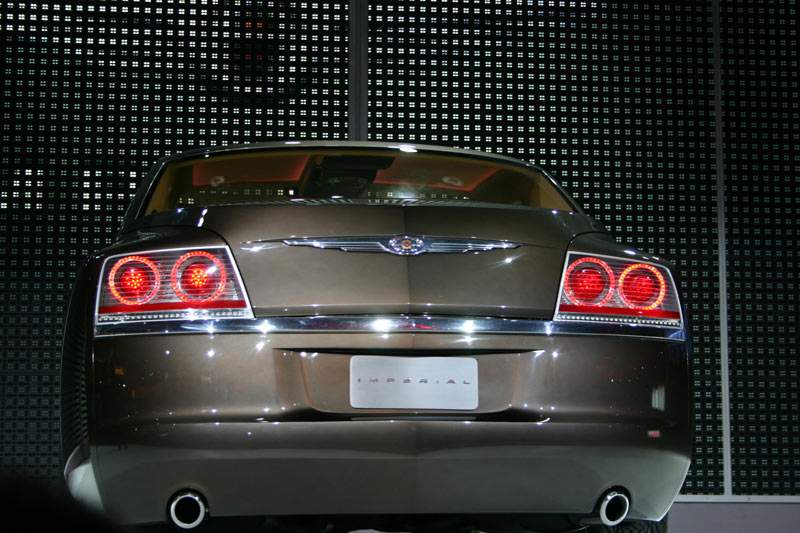
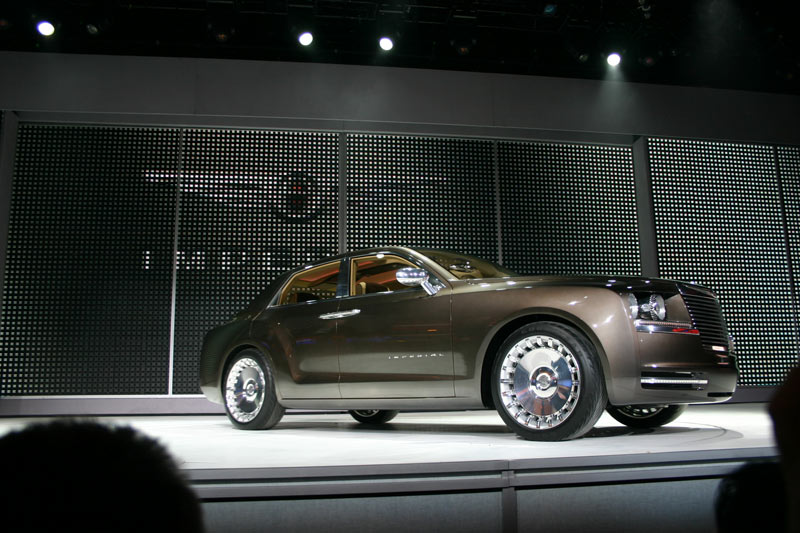
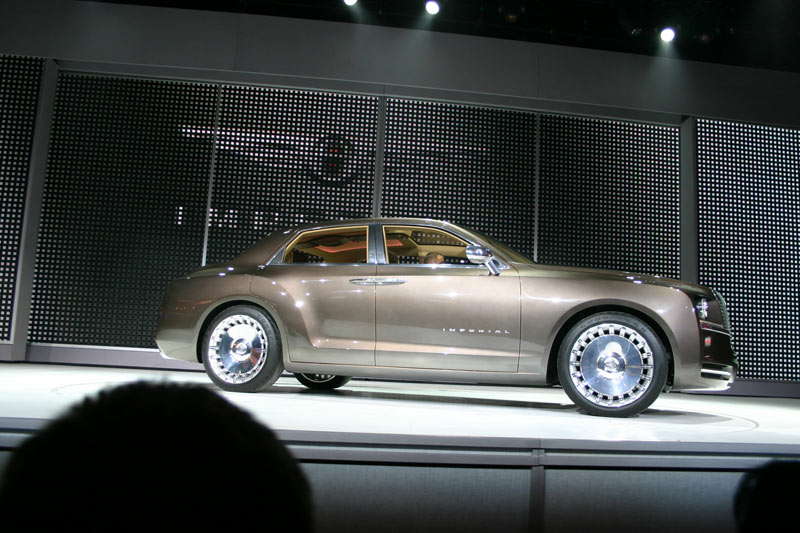
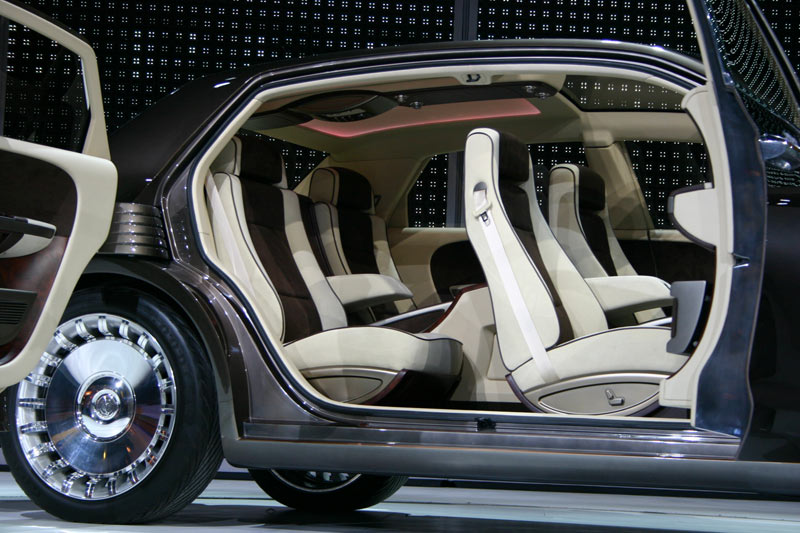
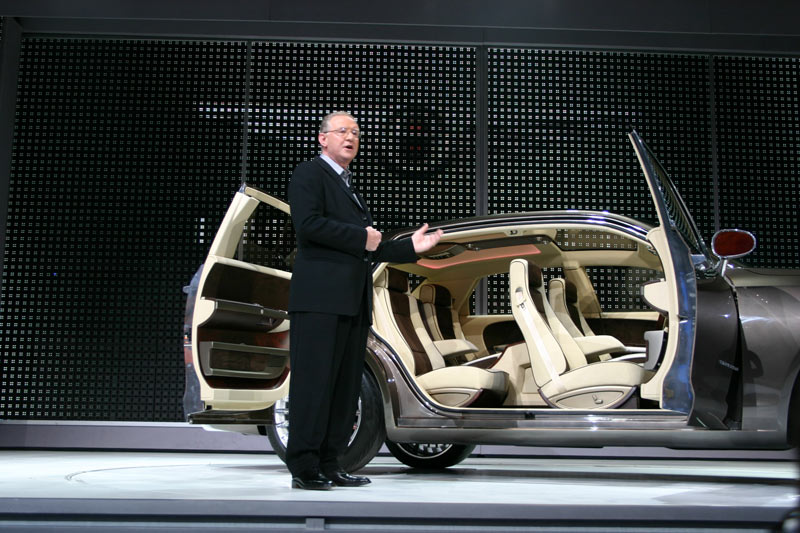
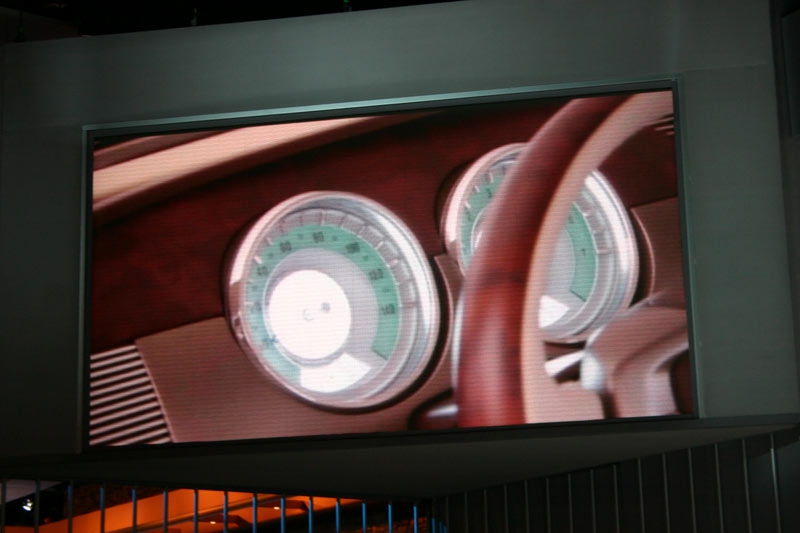

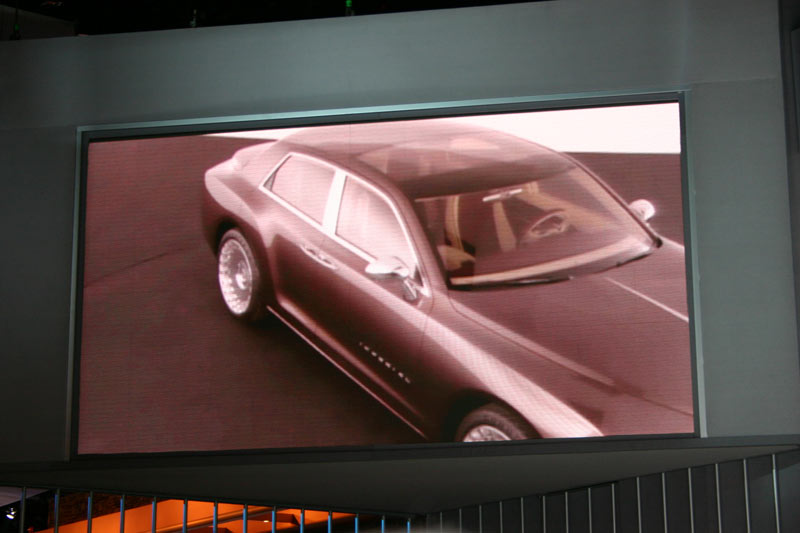

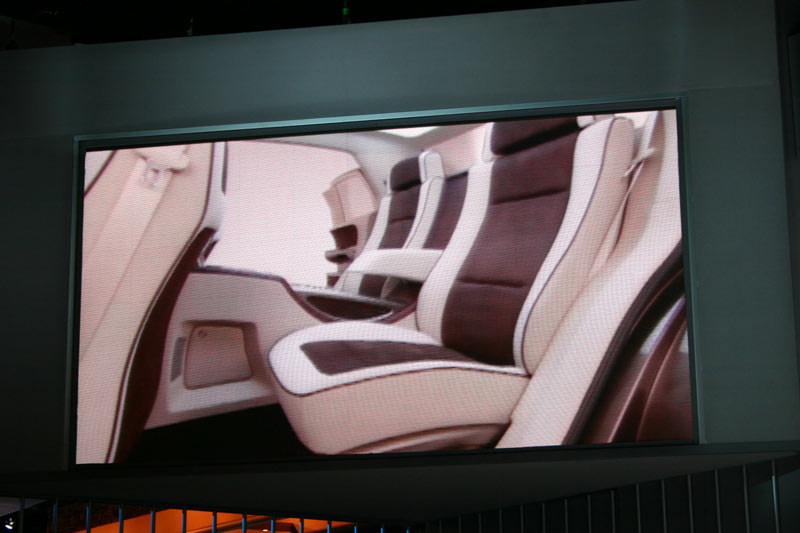
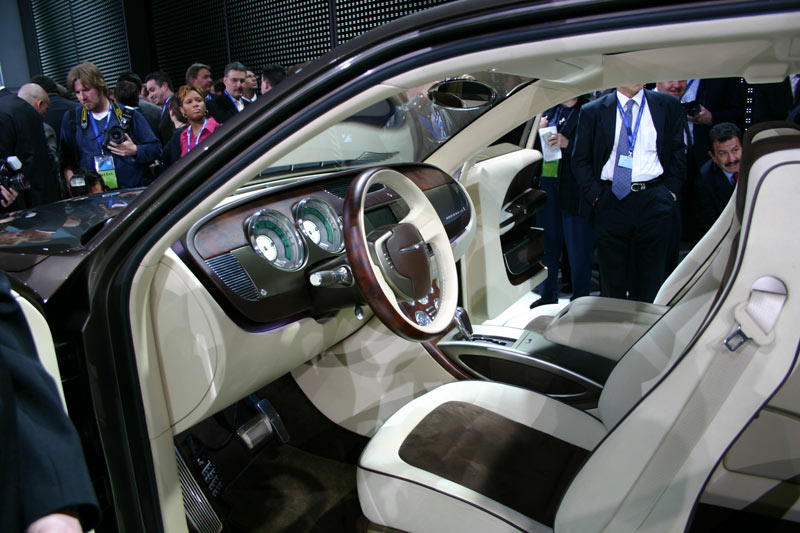
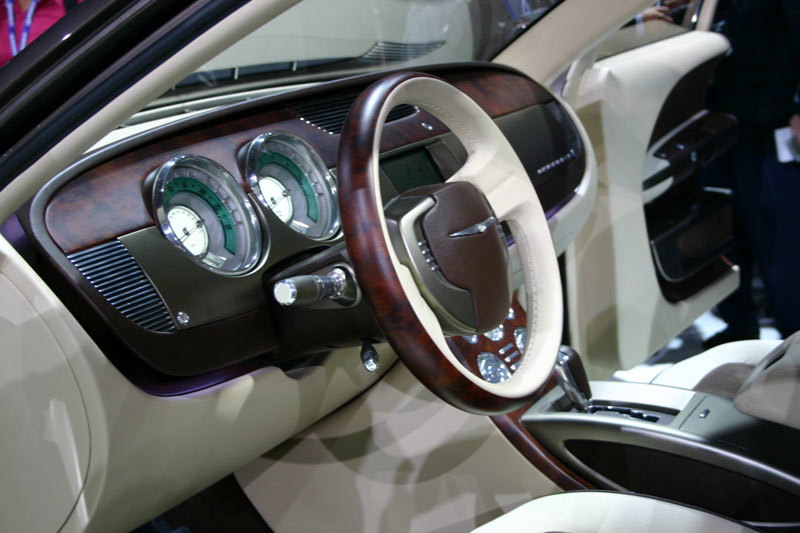
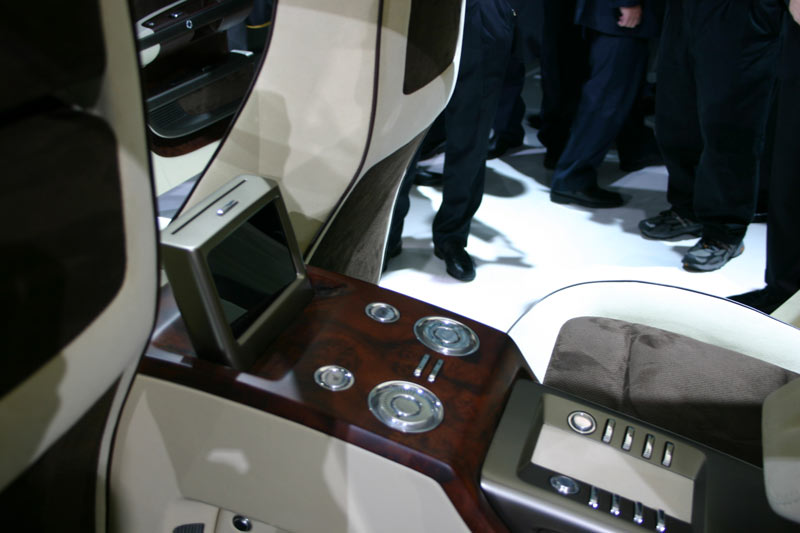
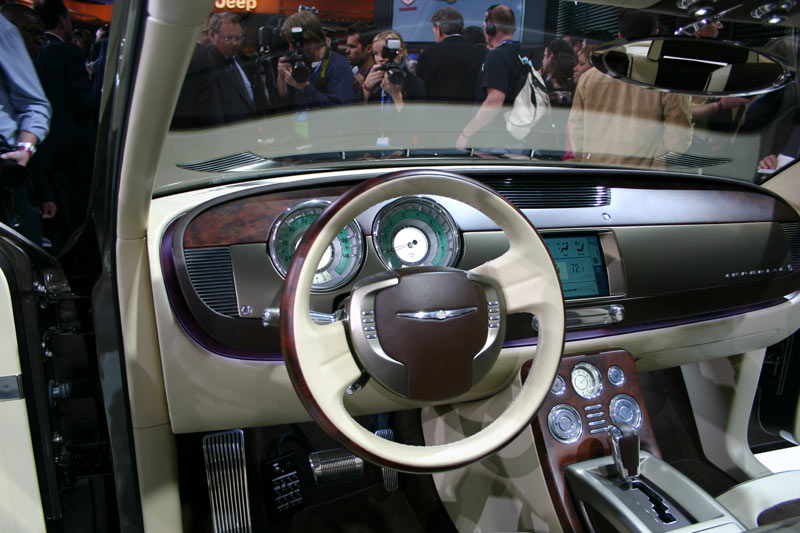
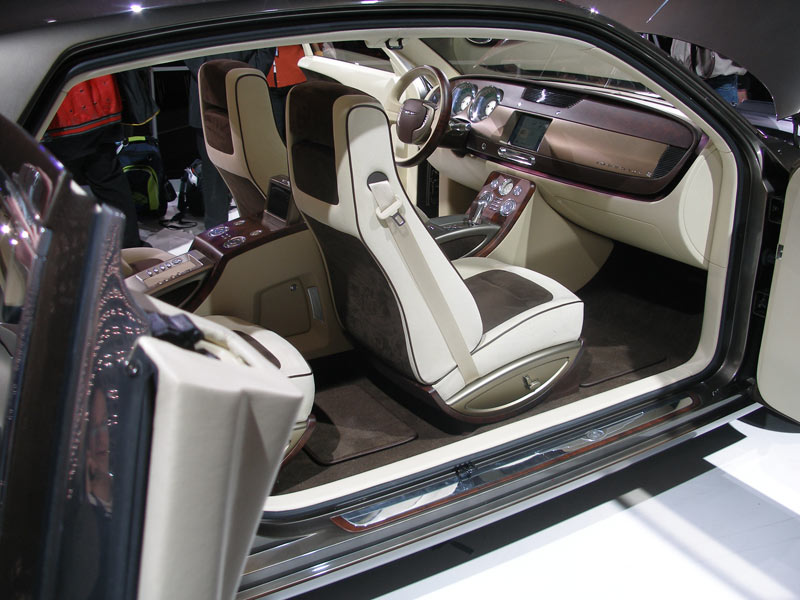
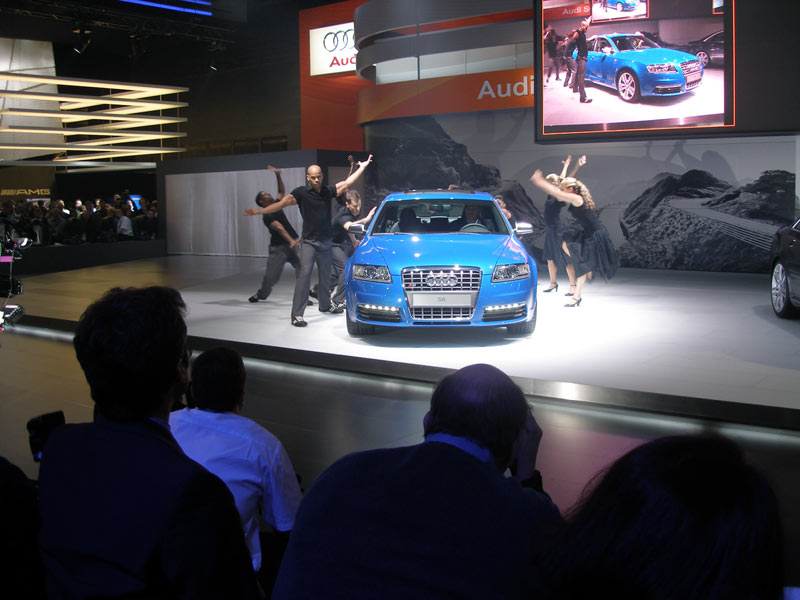
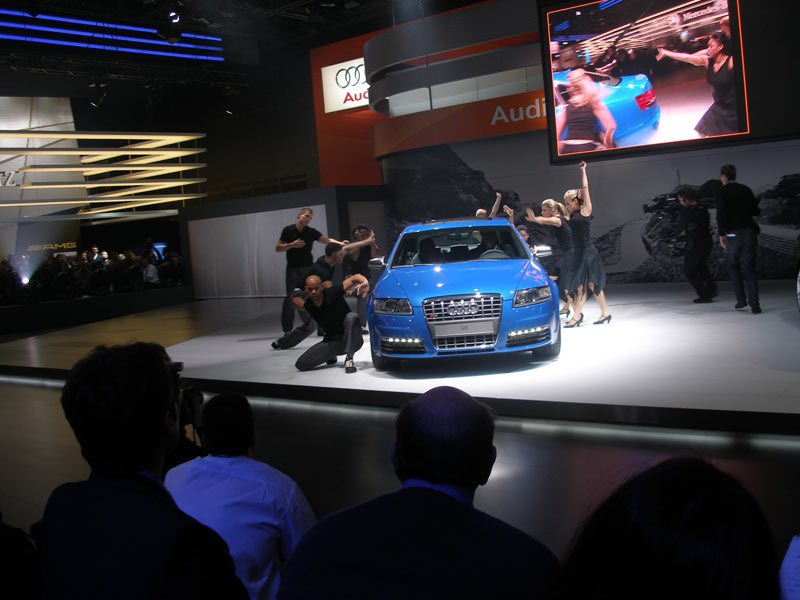
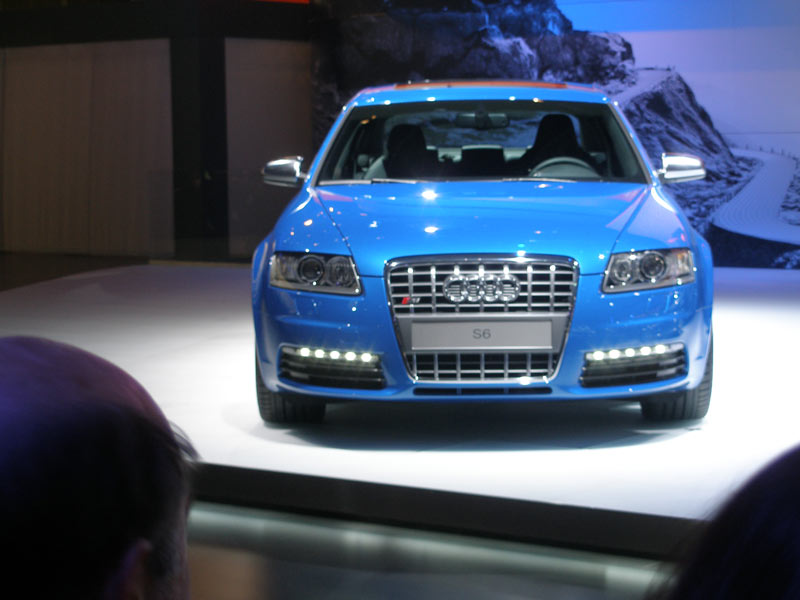
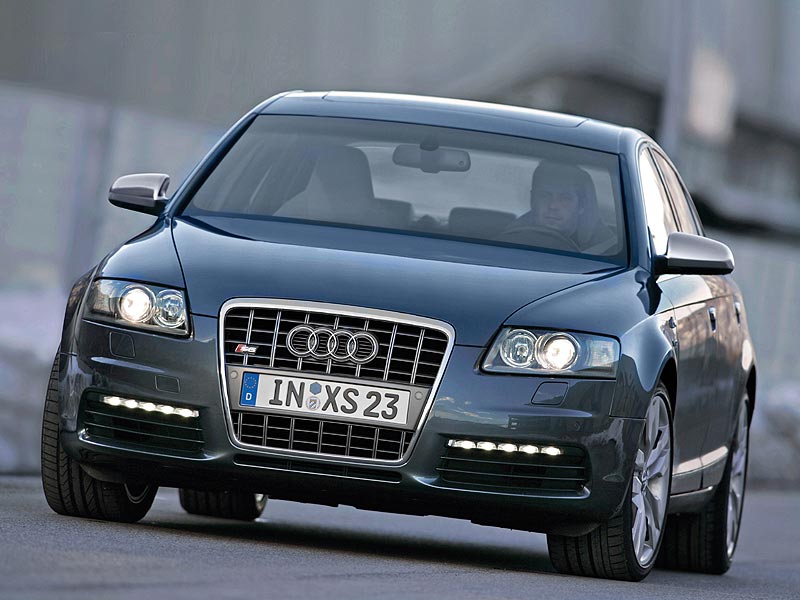
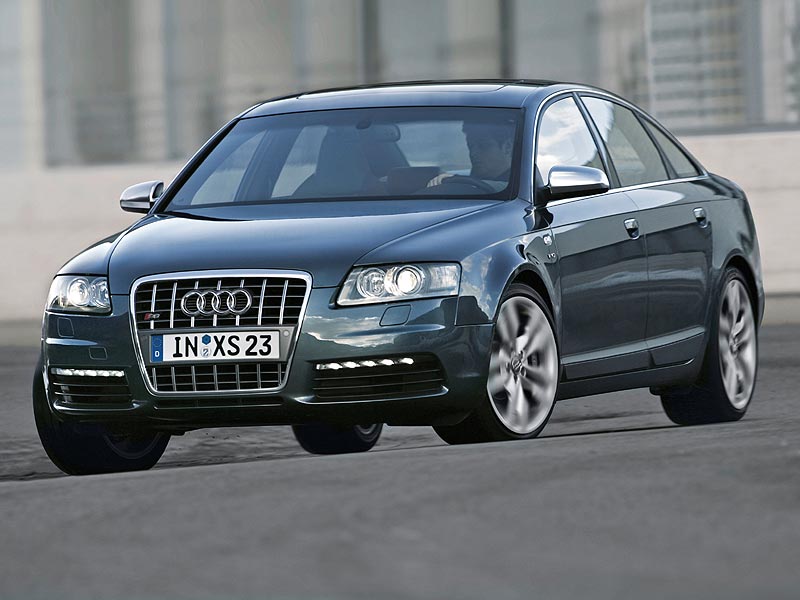
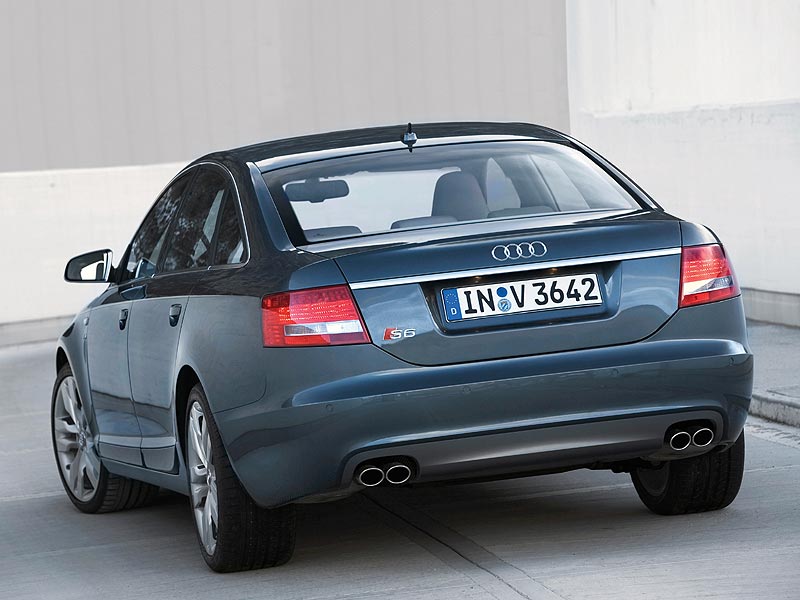
Audi Roadjet concept
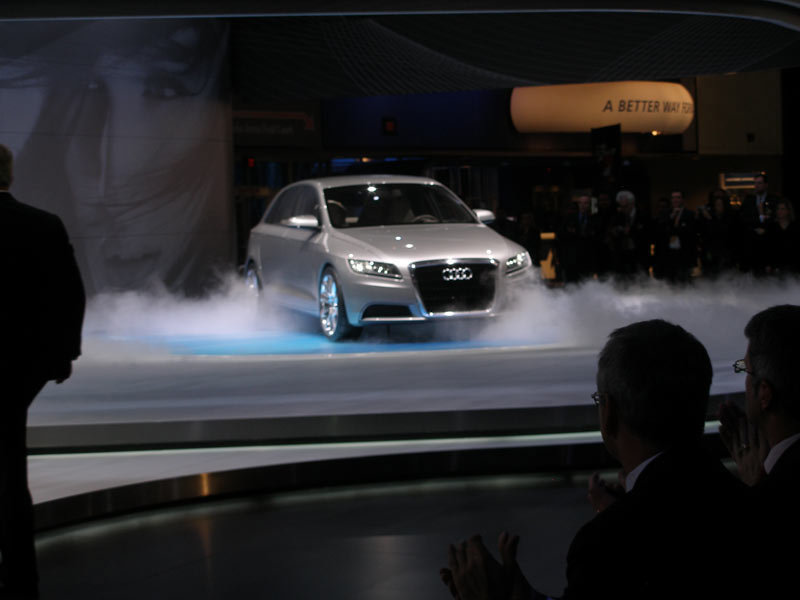
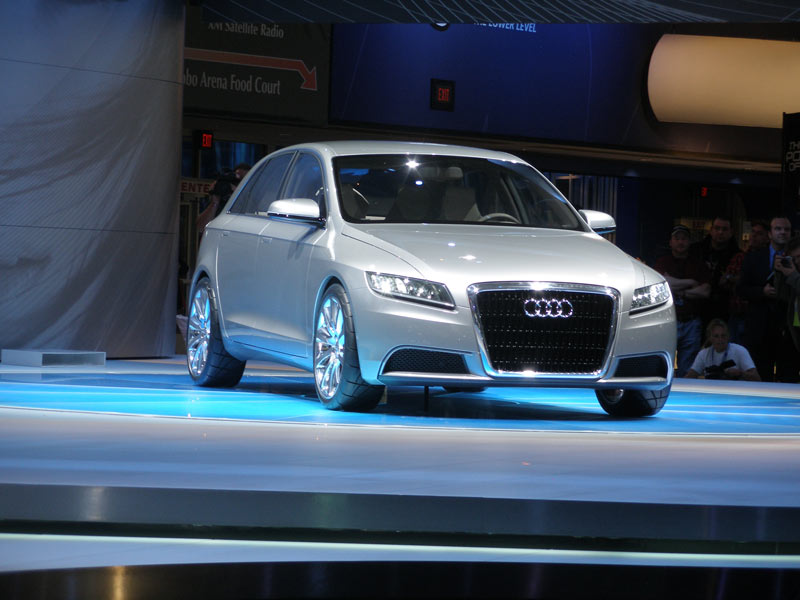
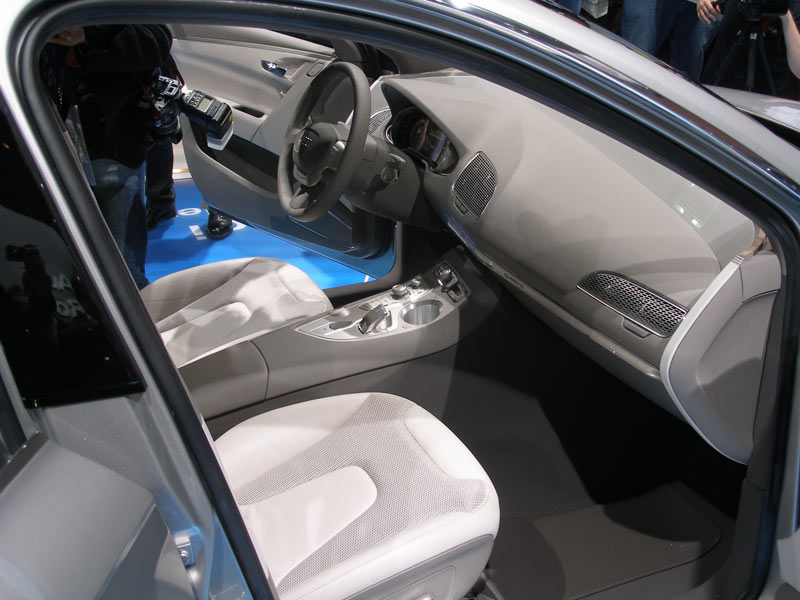
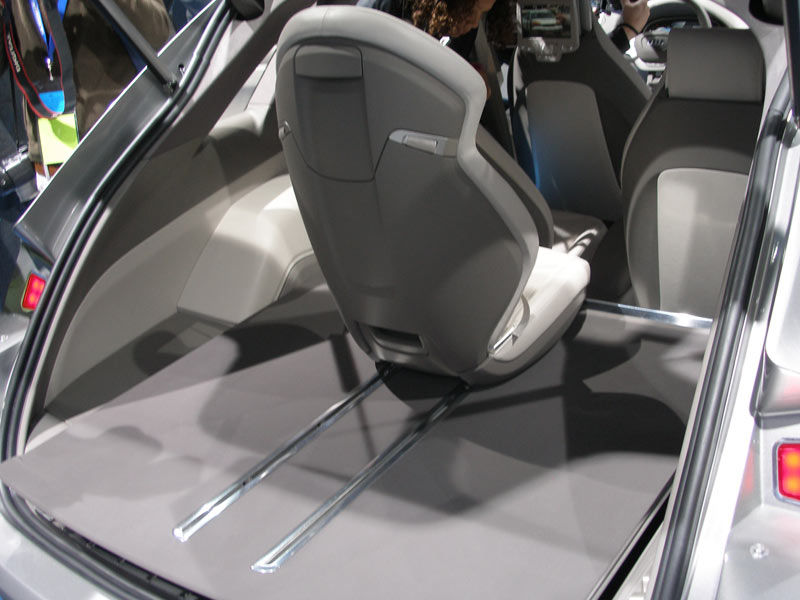
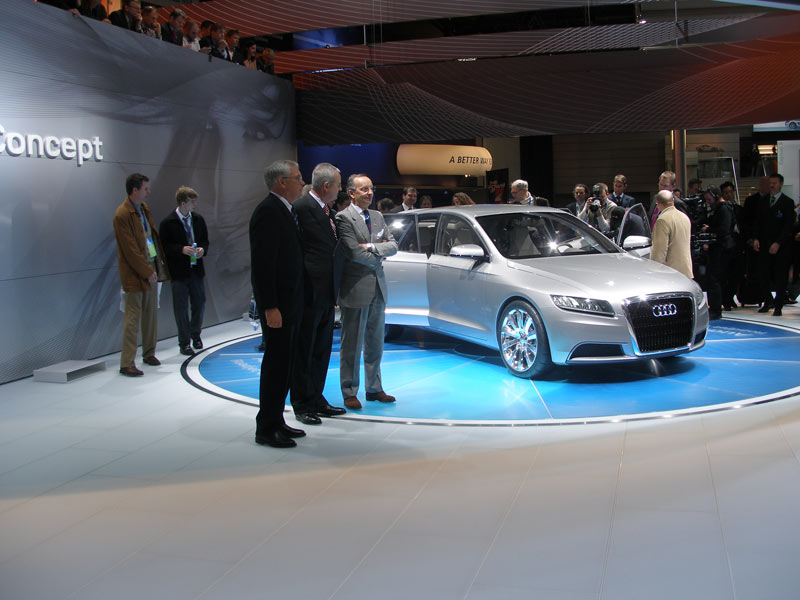
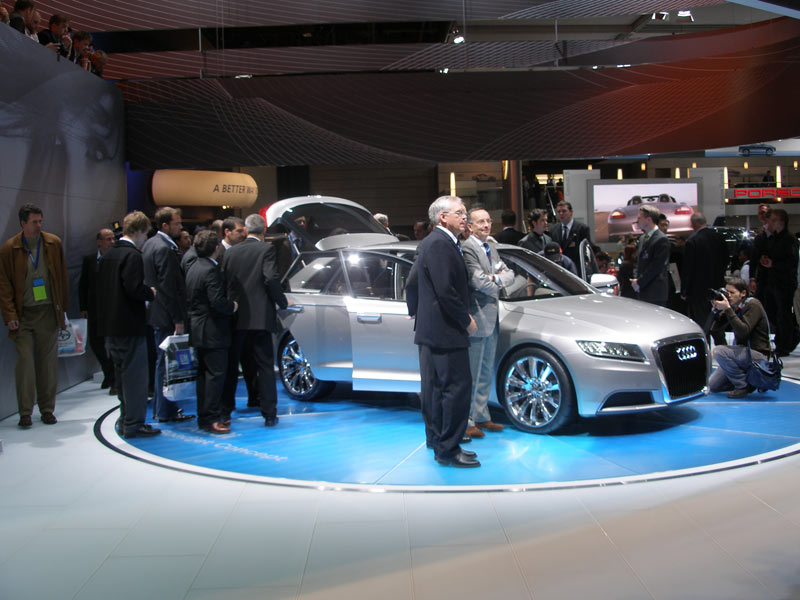
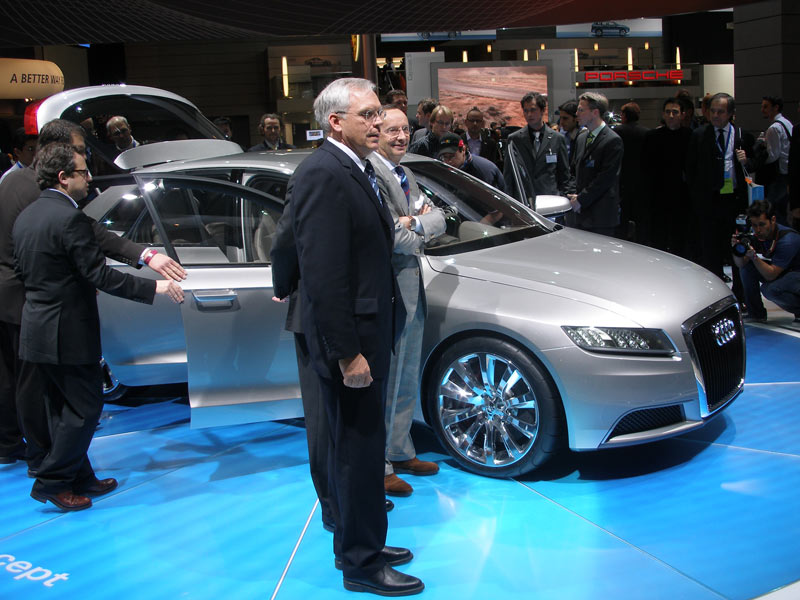
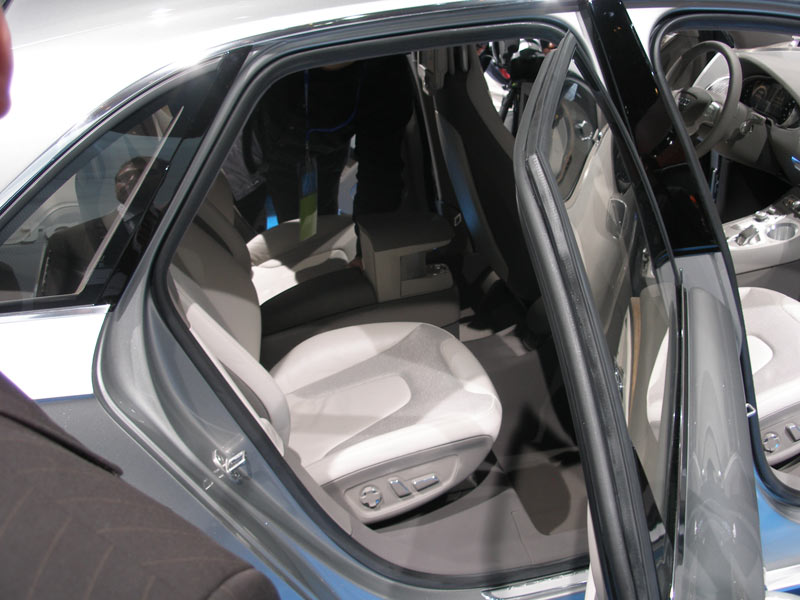
Buick Enclave concept
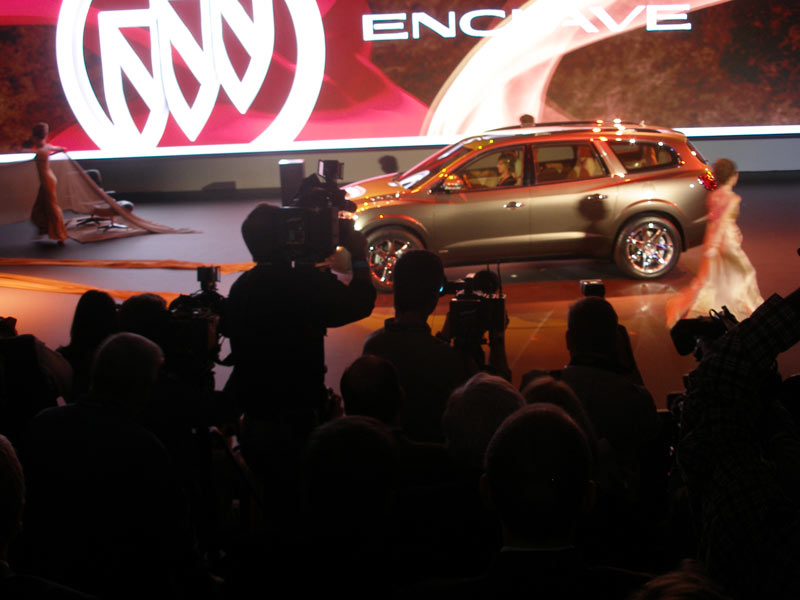
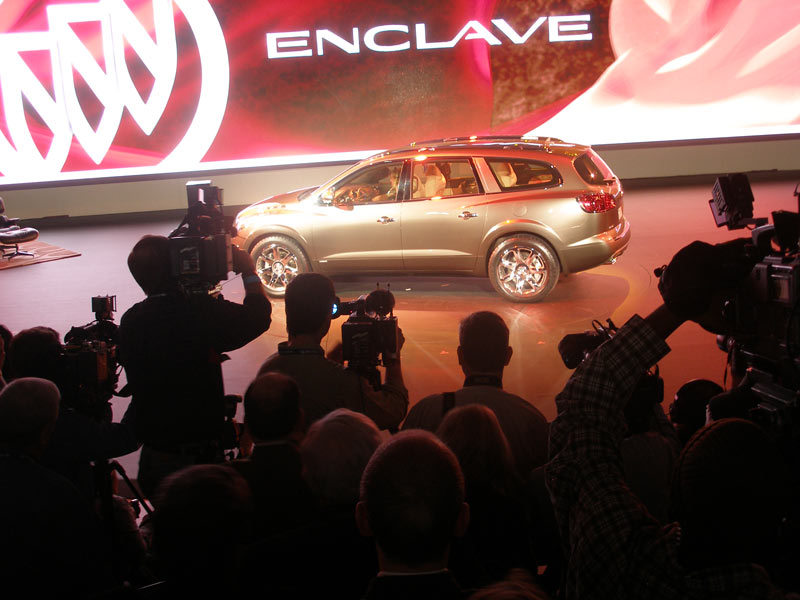
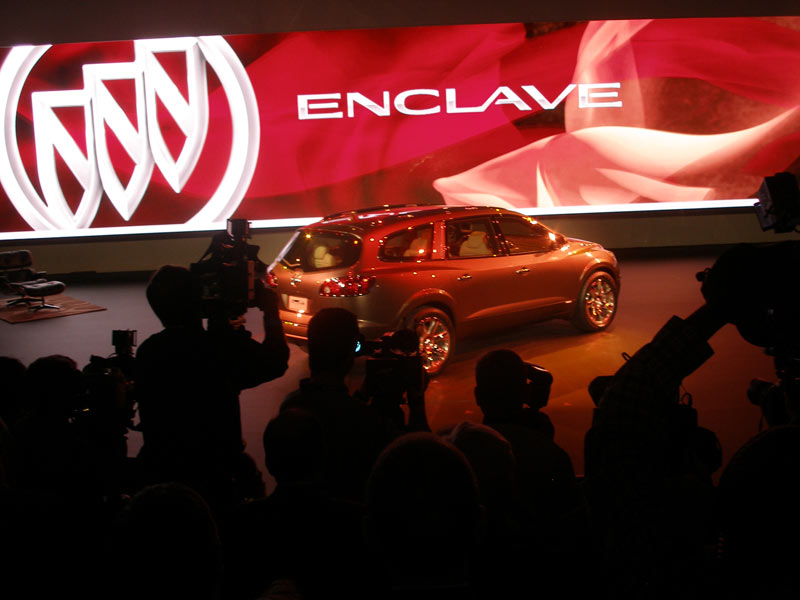
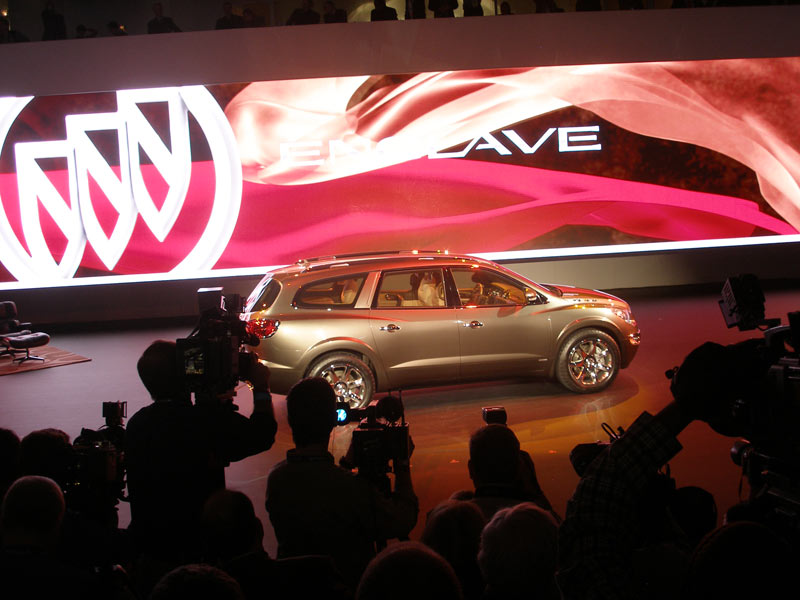
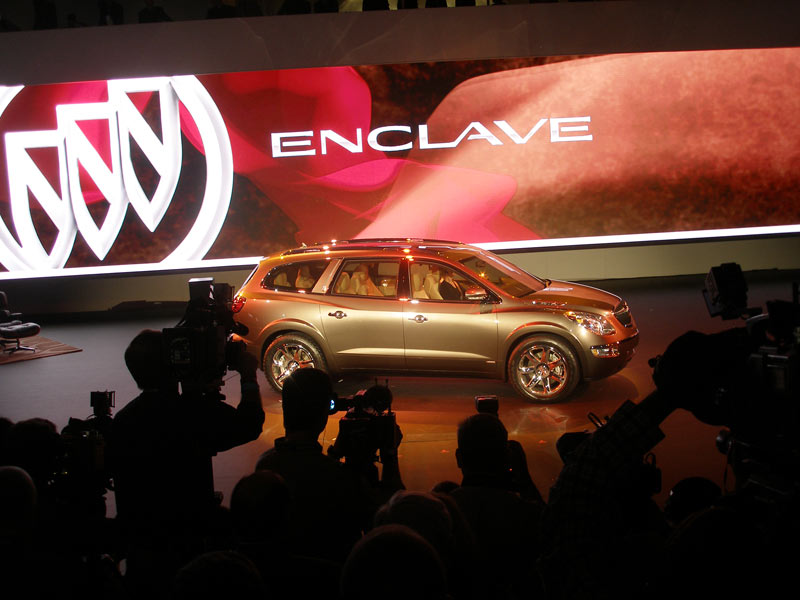
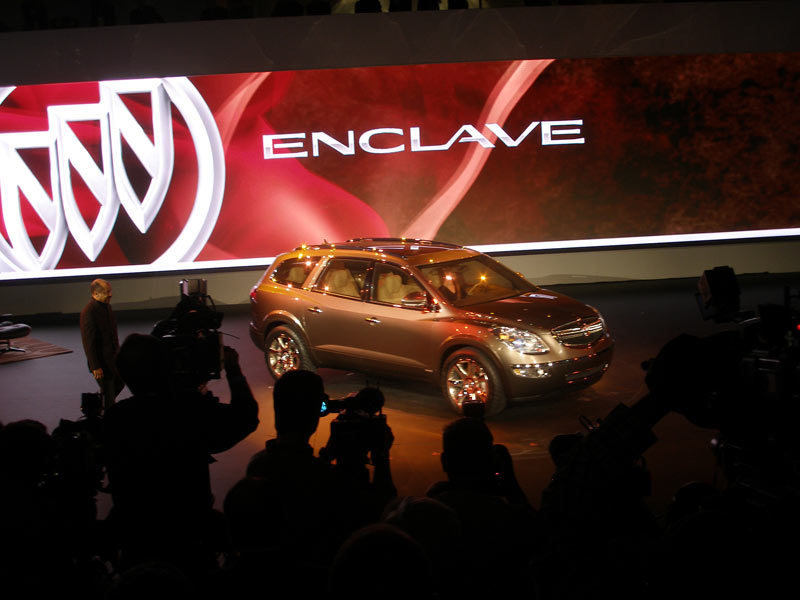
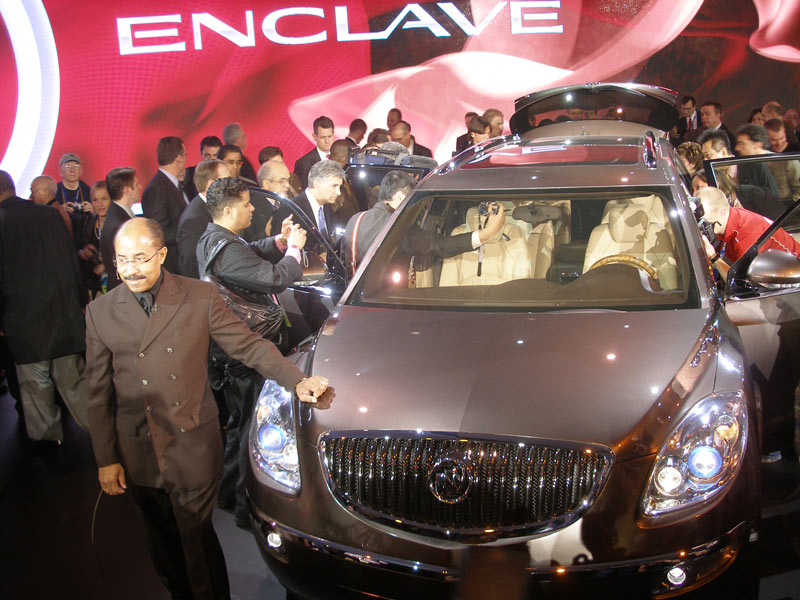
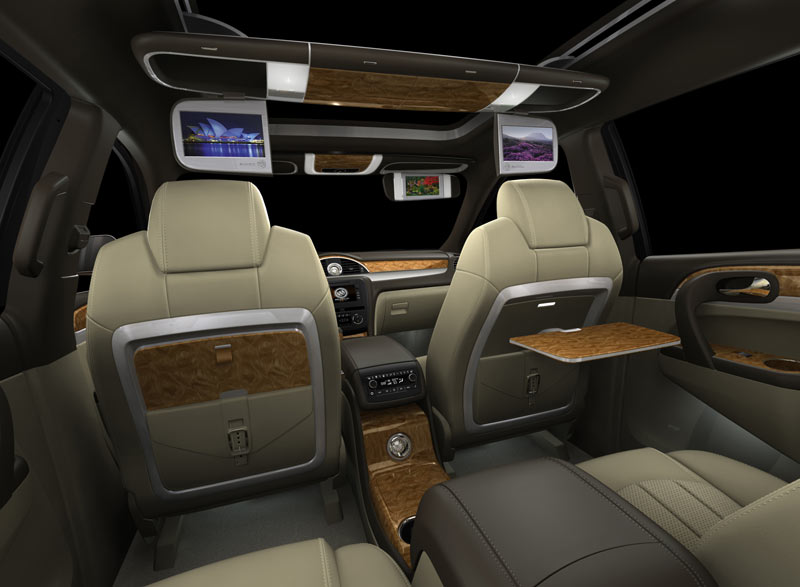
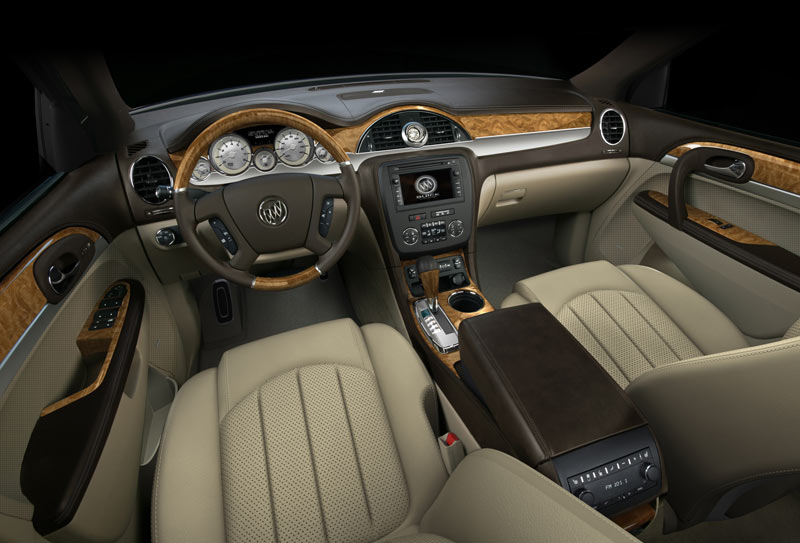
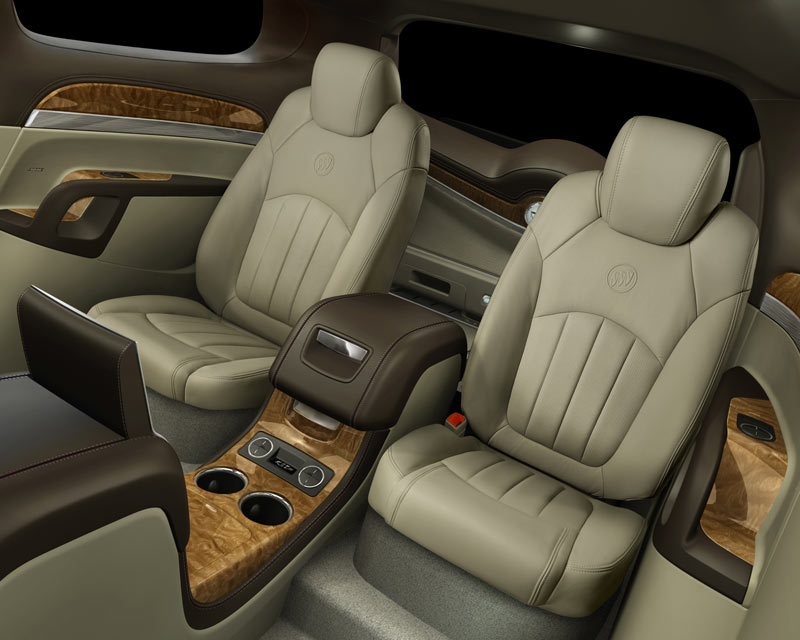
2007 Lexus LS 460
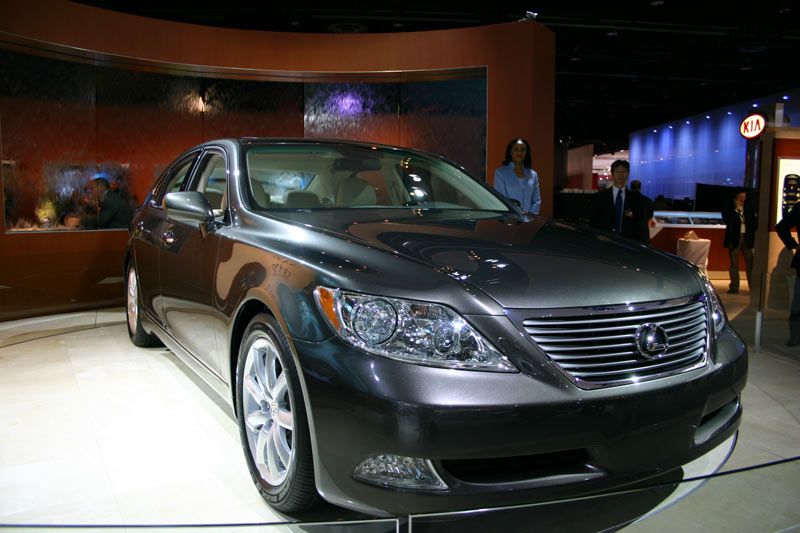
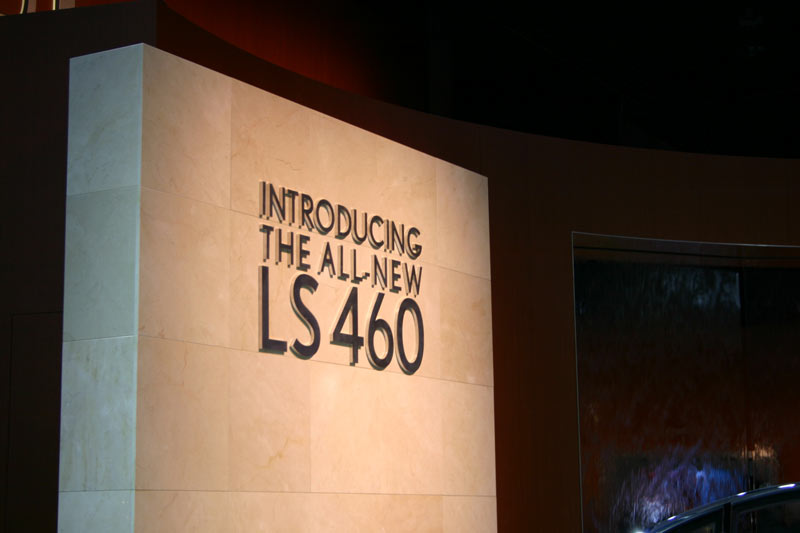
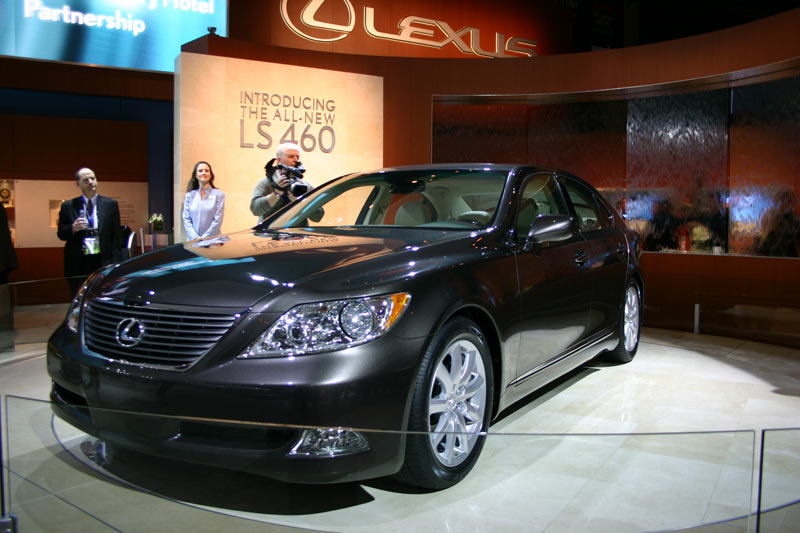
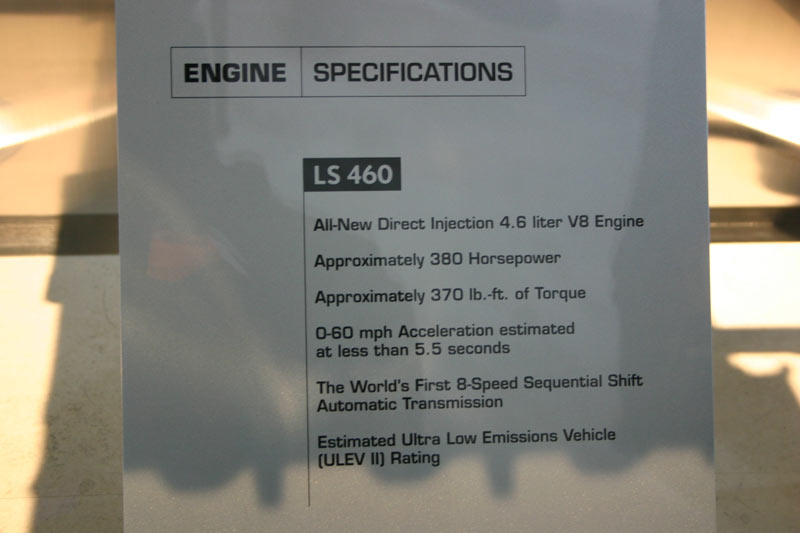
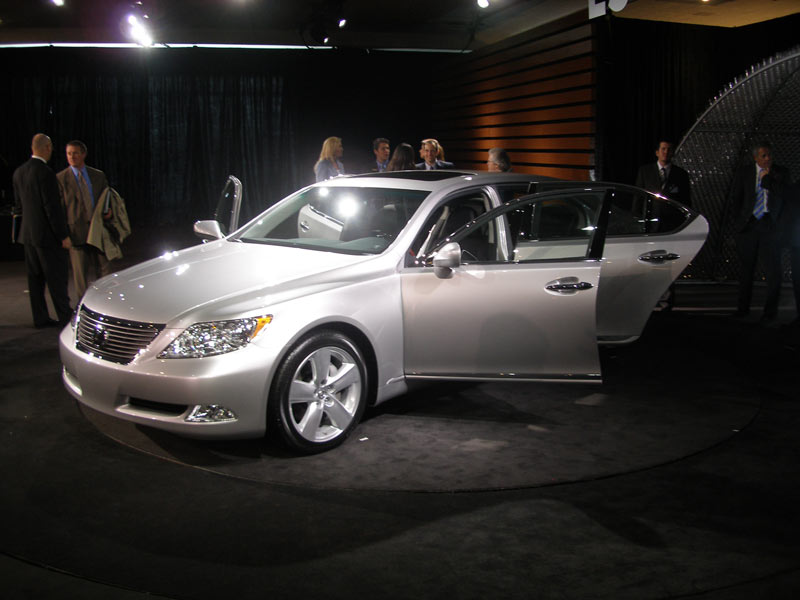
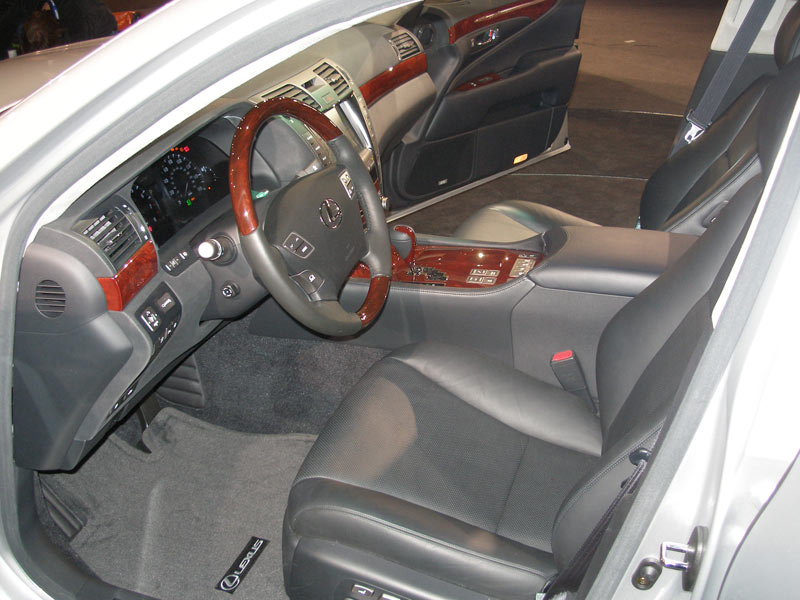
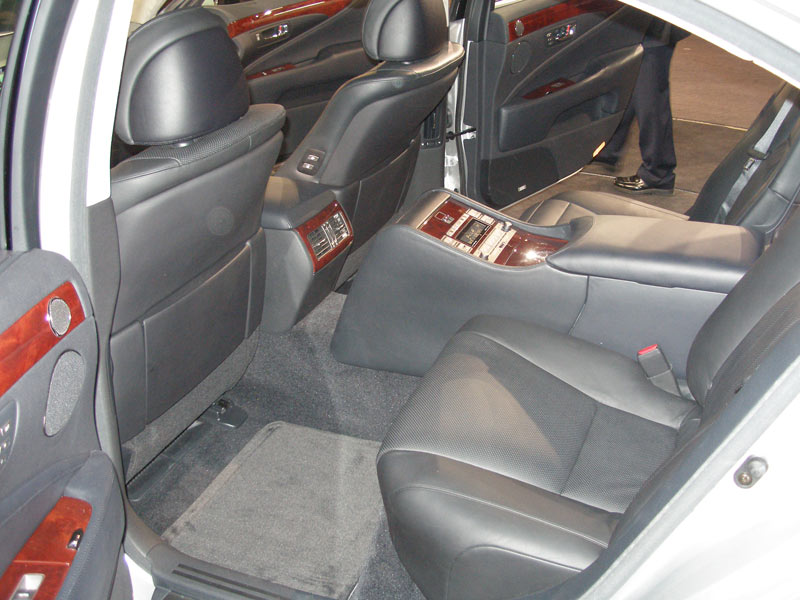
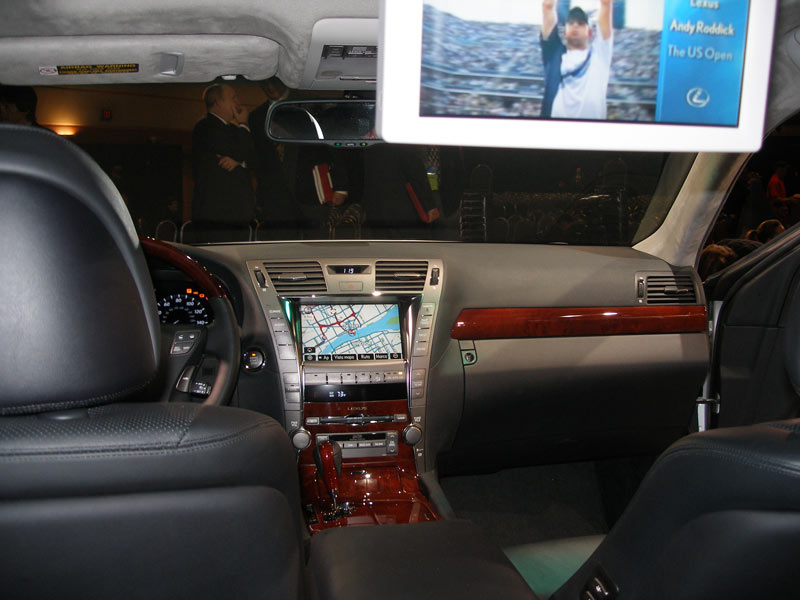
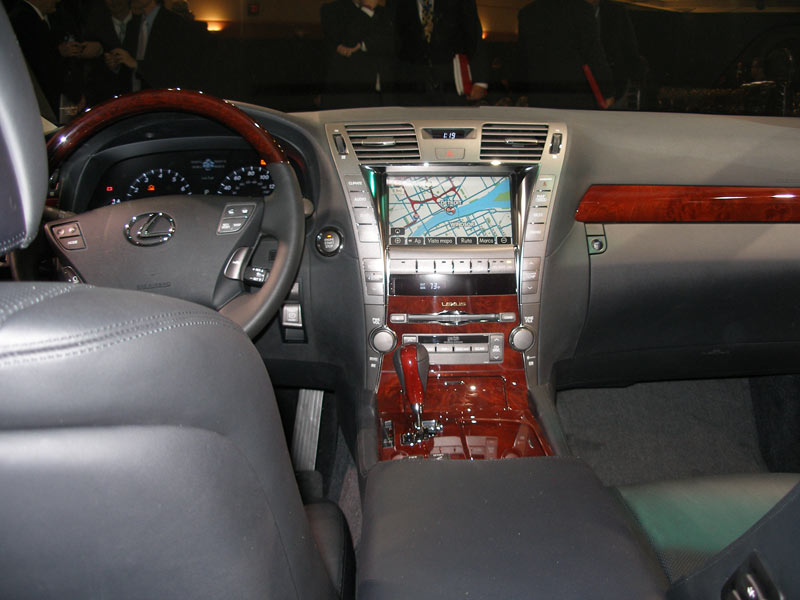
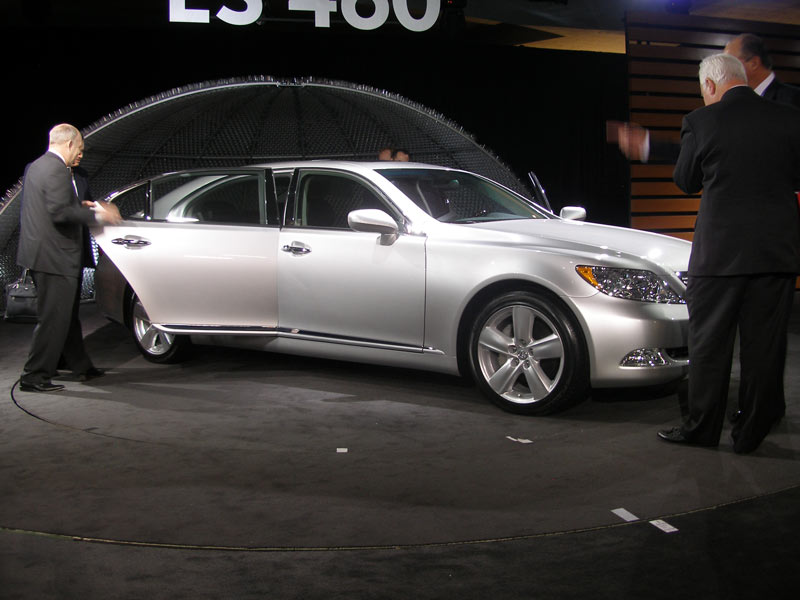
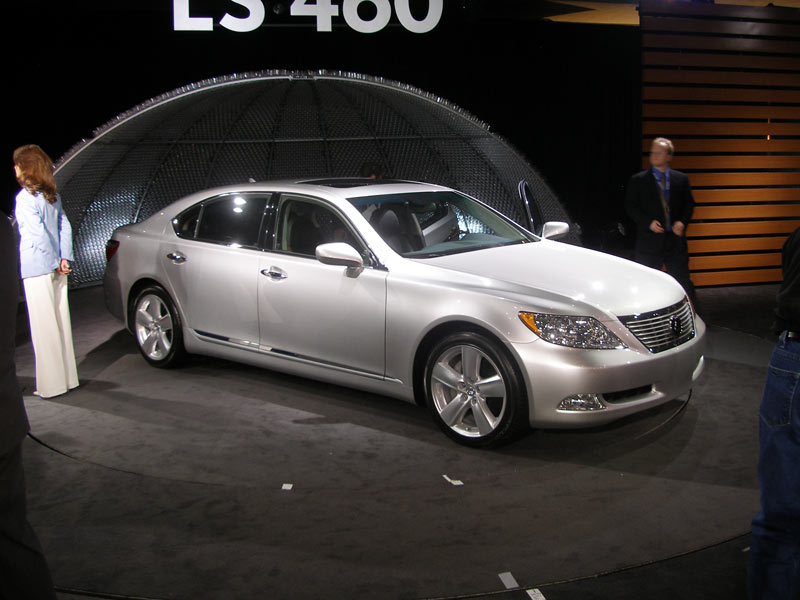
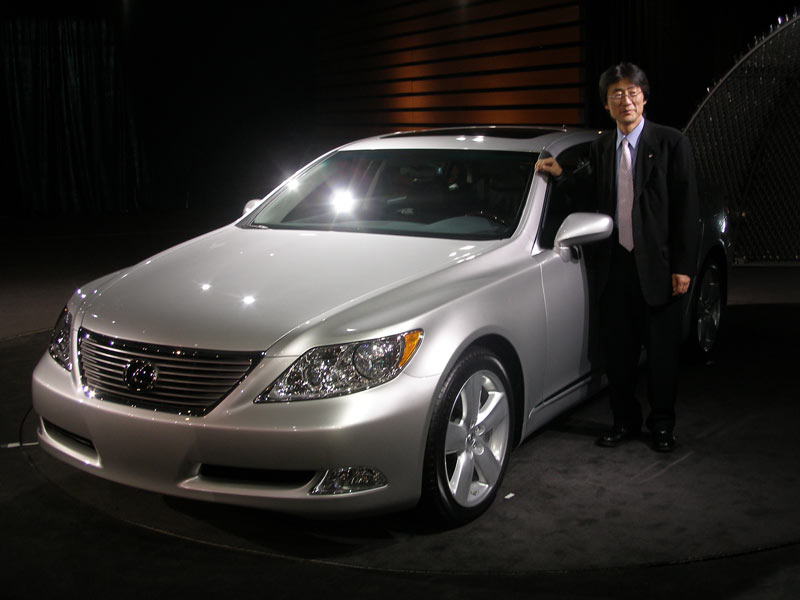
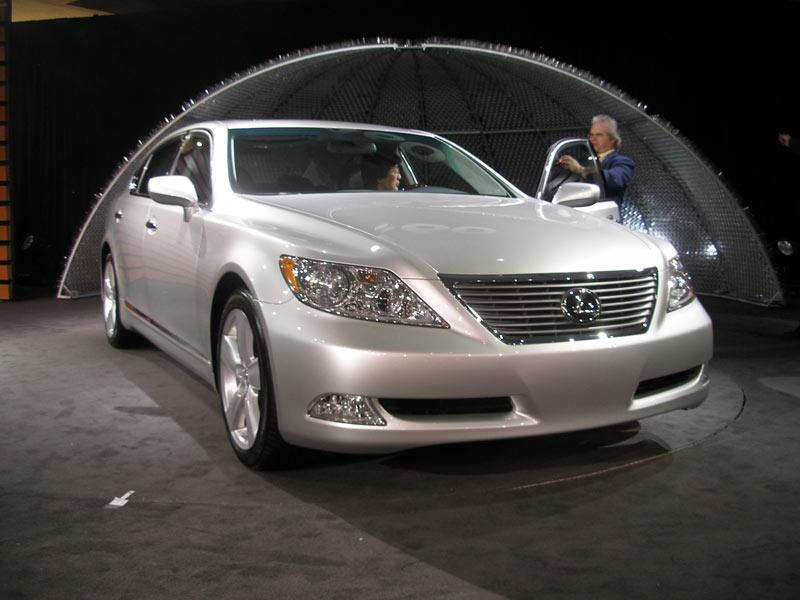
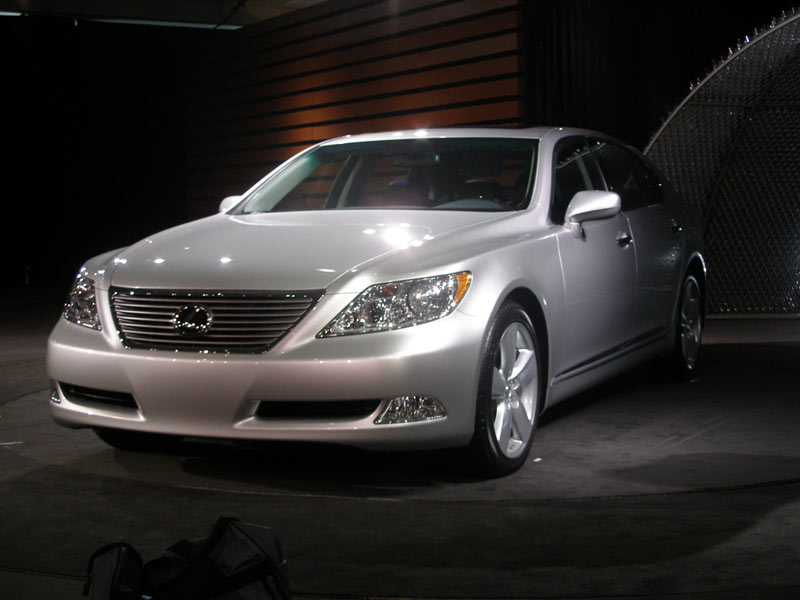
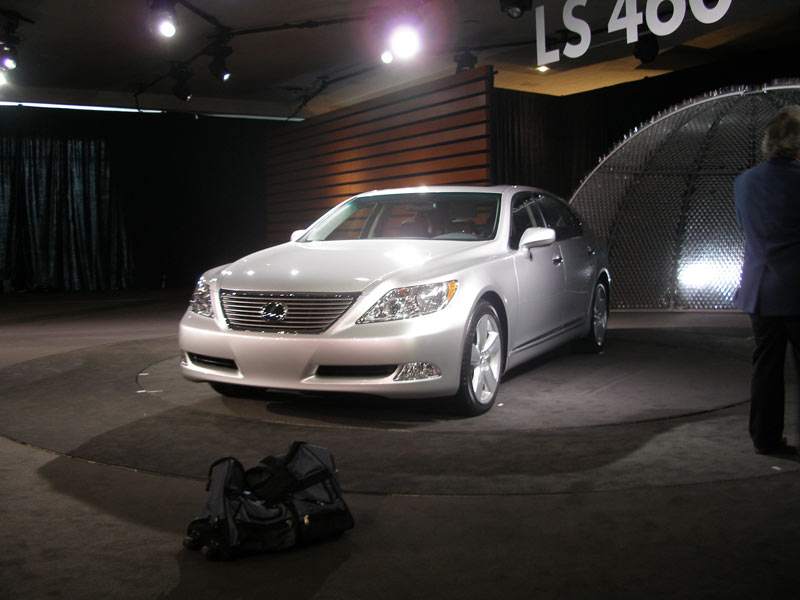
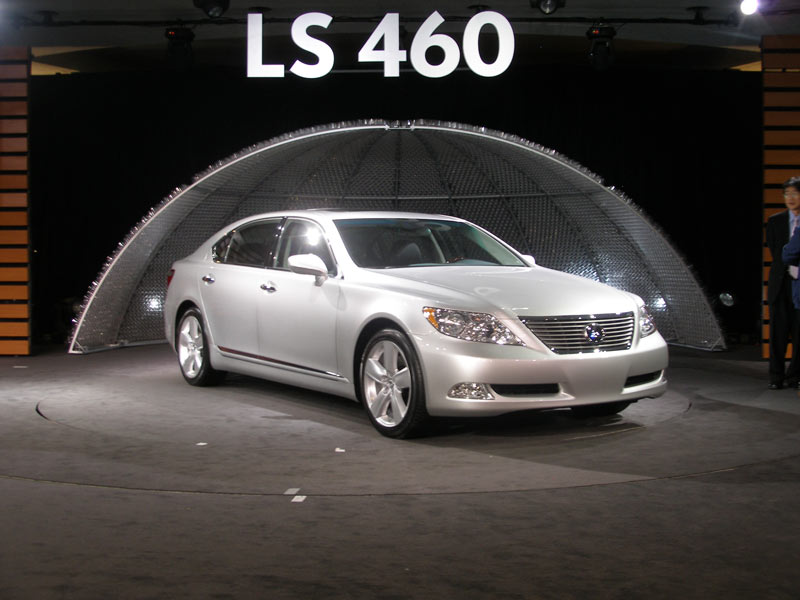
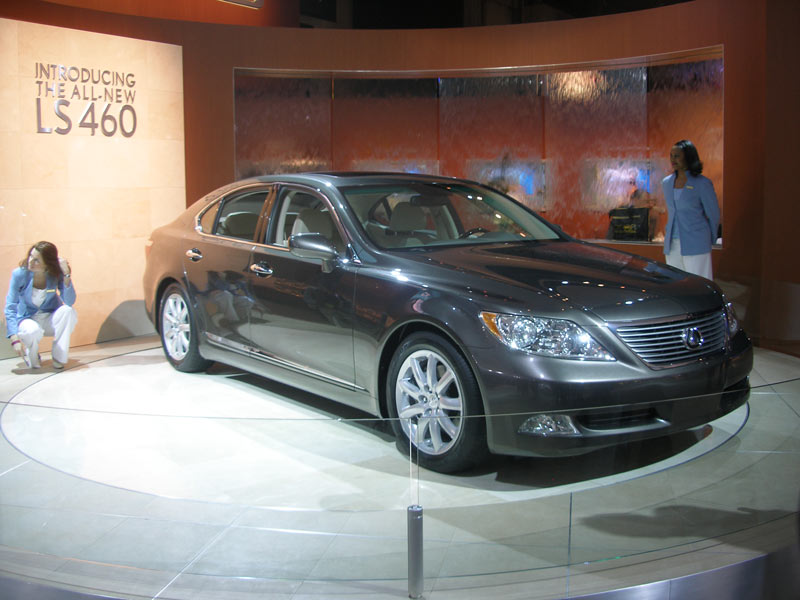
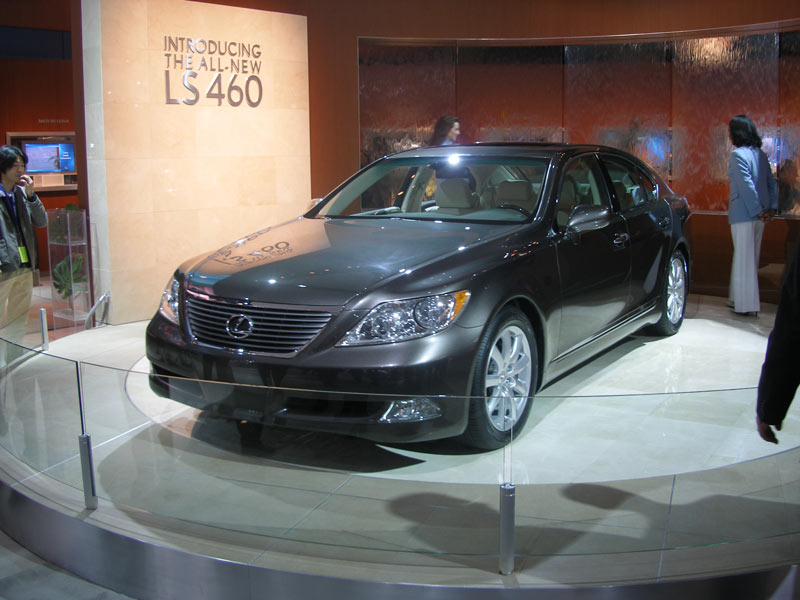
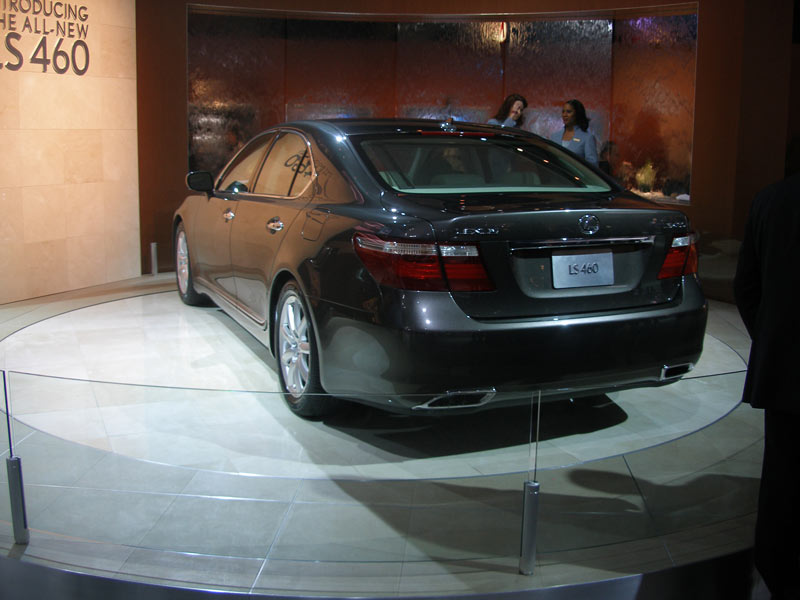
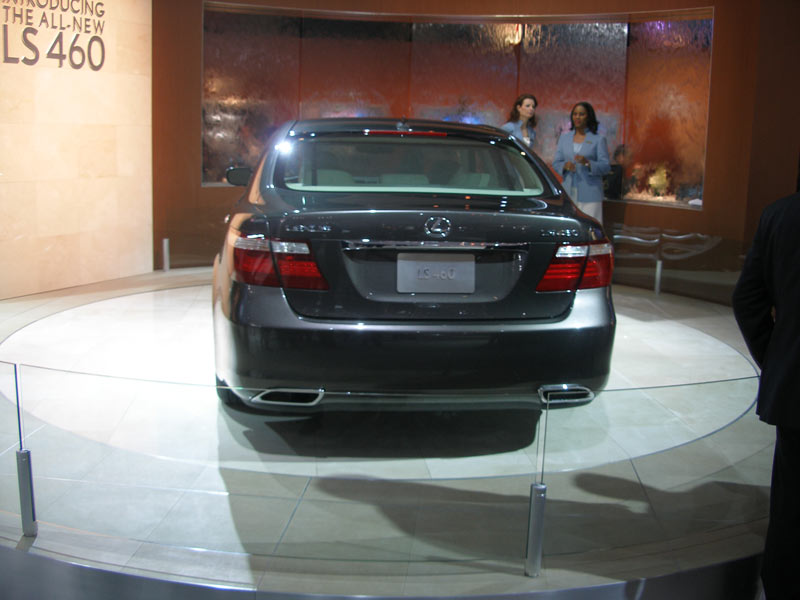



2007 Mazda CX-7
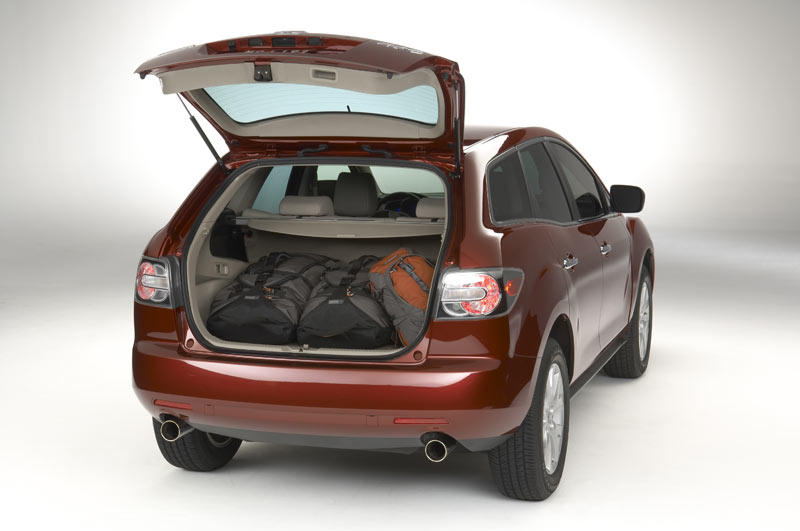
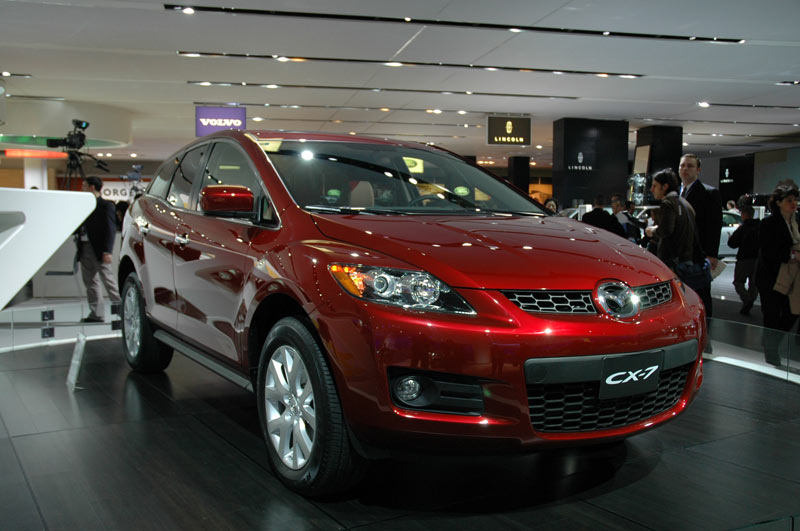
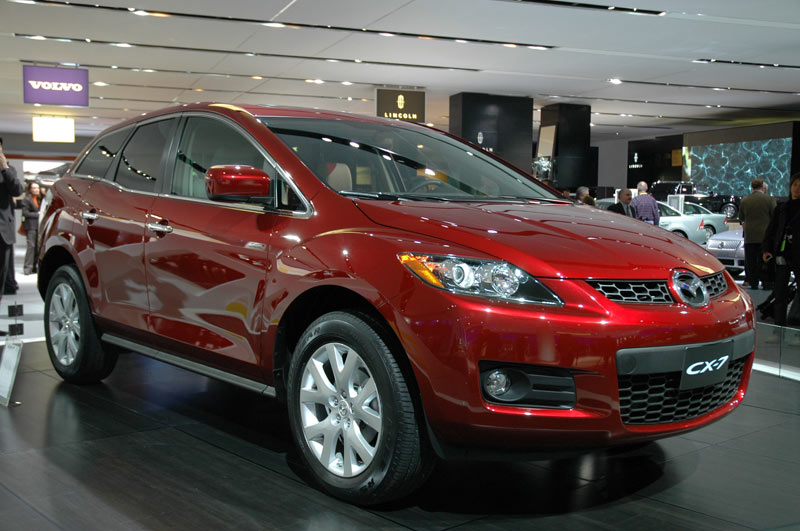
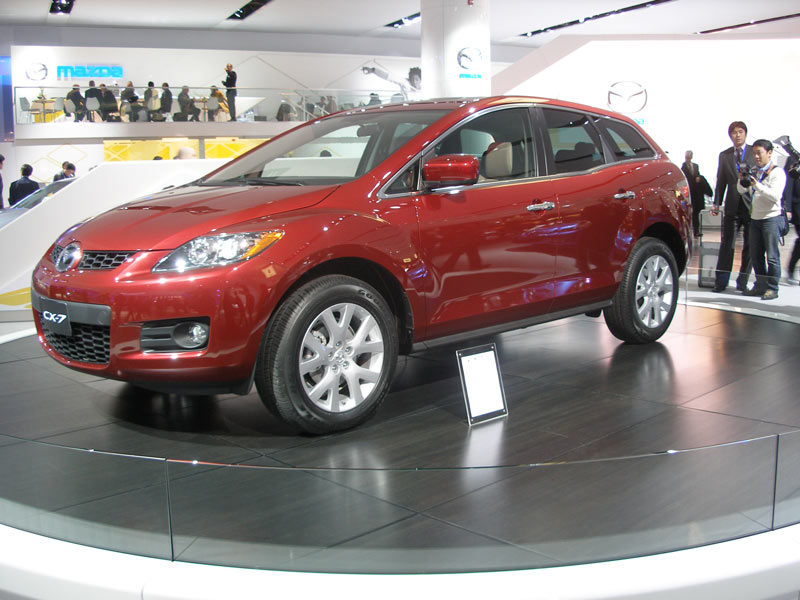
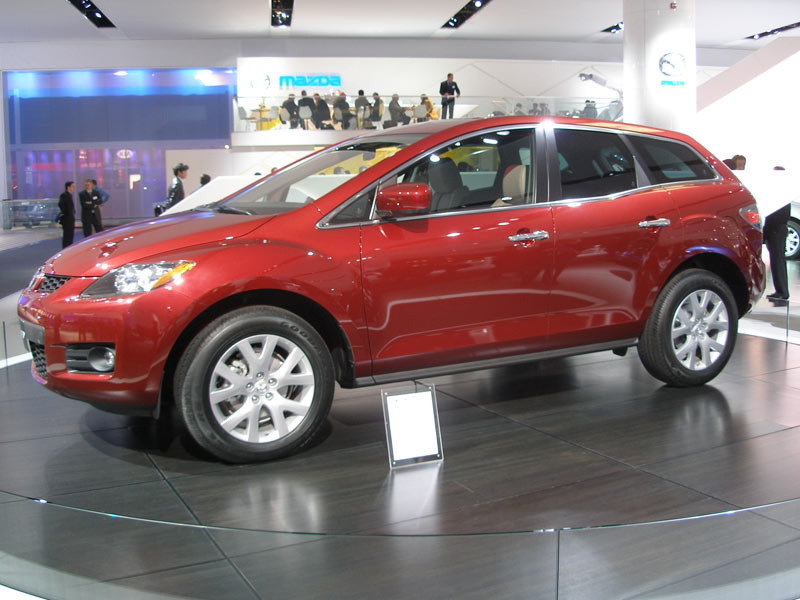
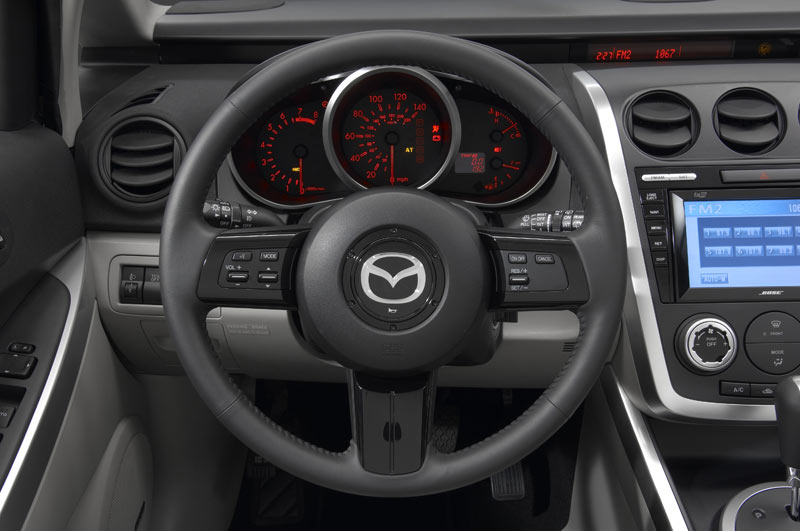
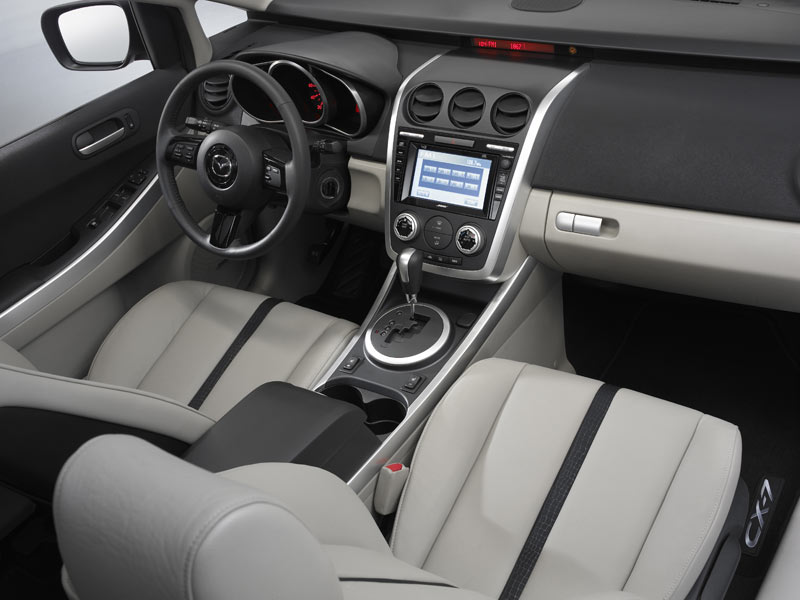
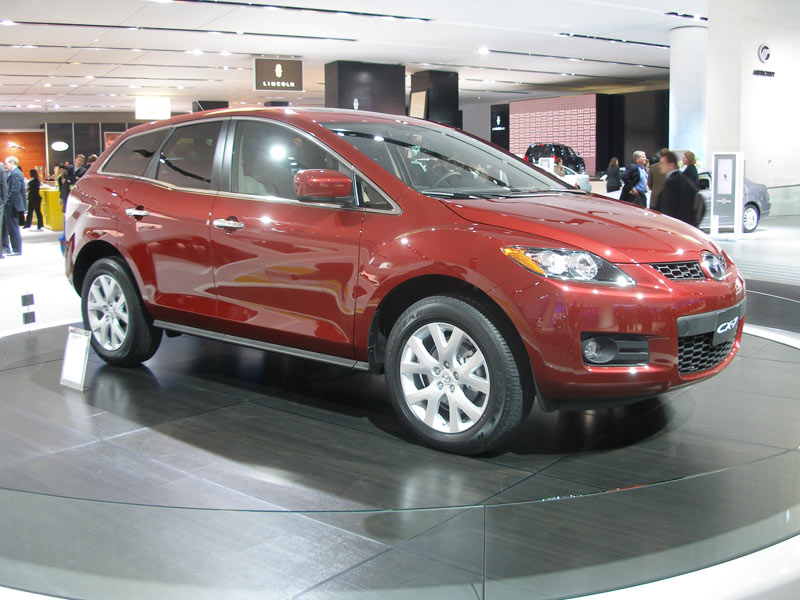
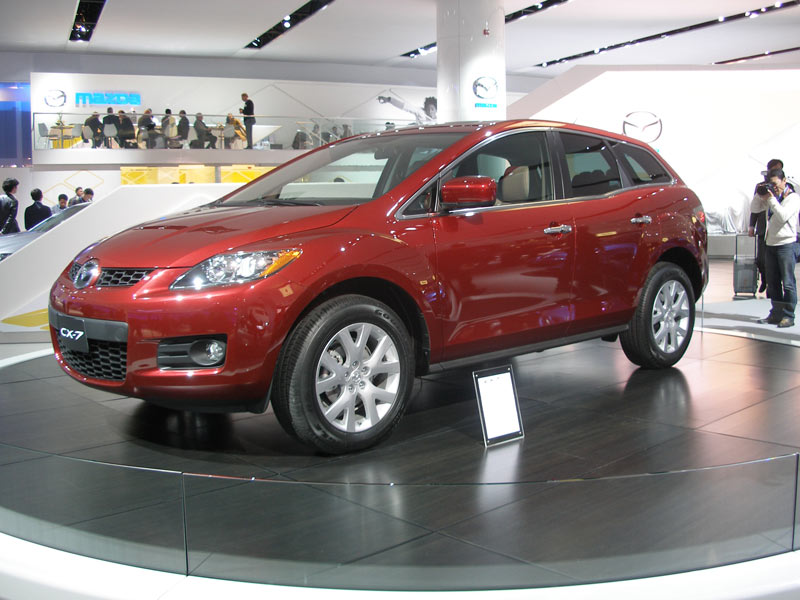
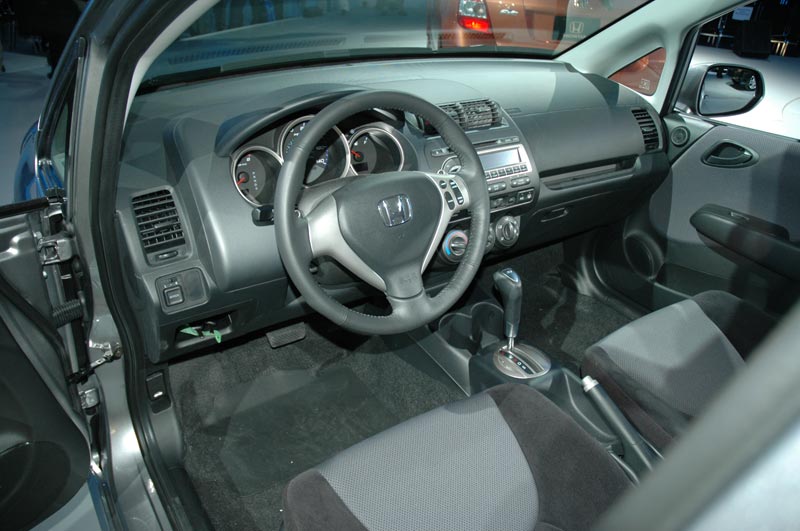
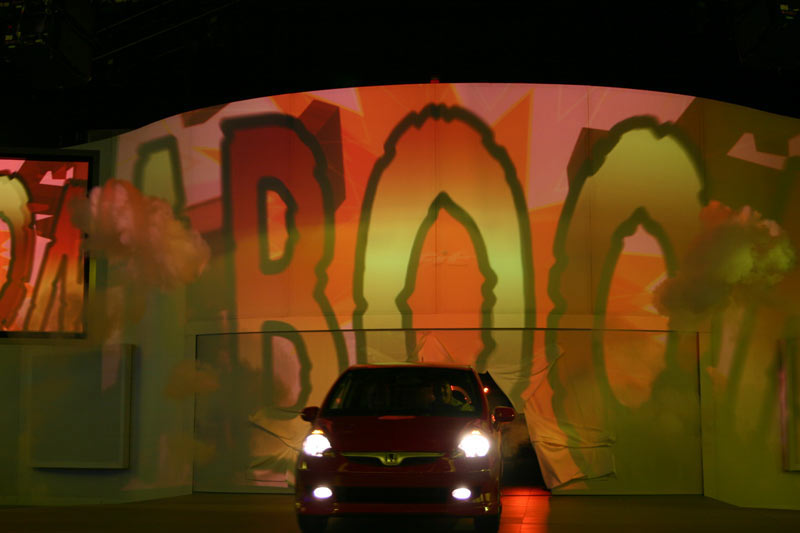
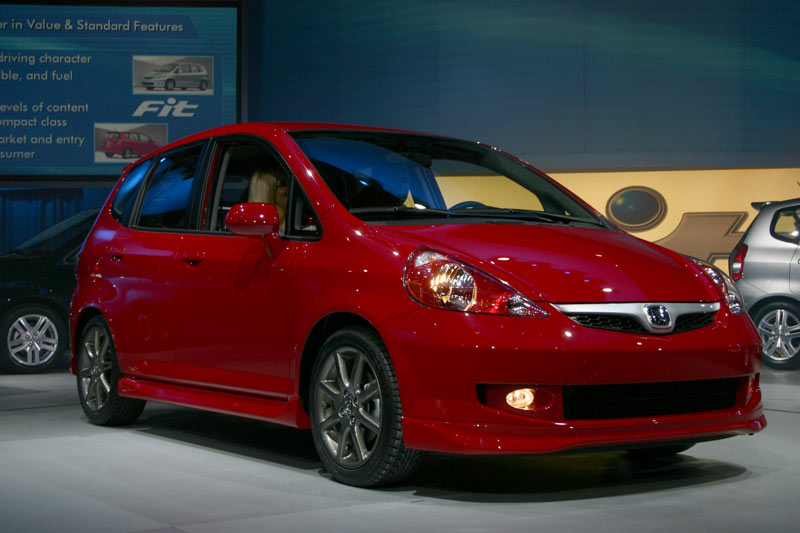
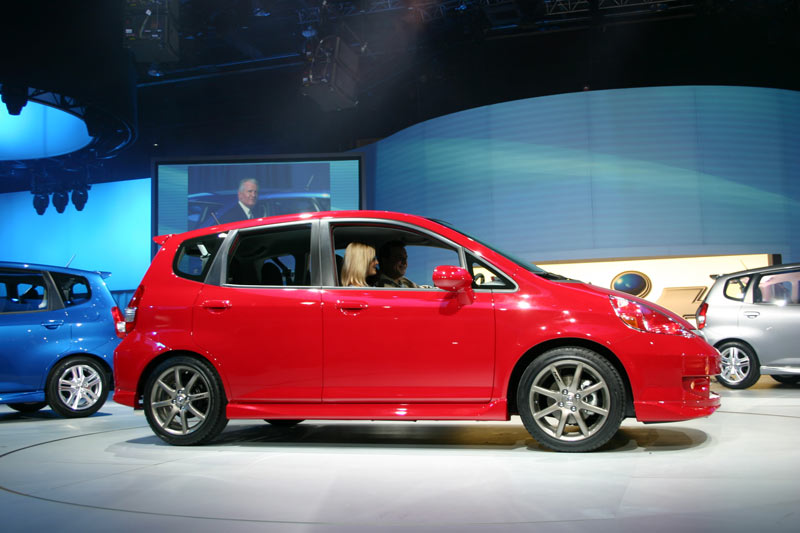
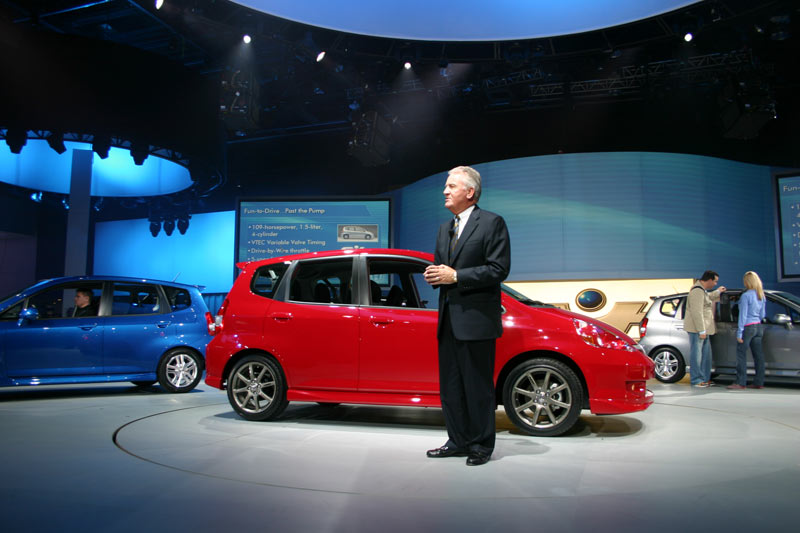
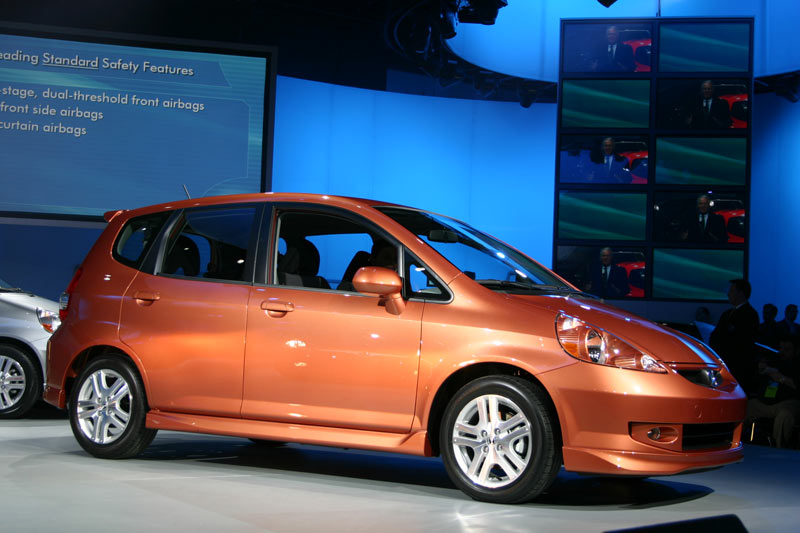
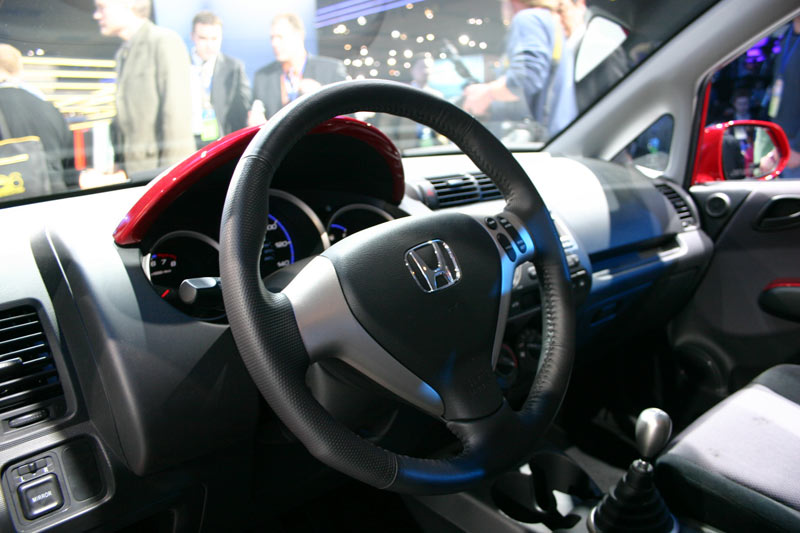
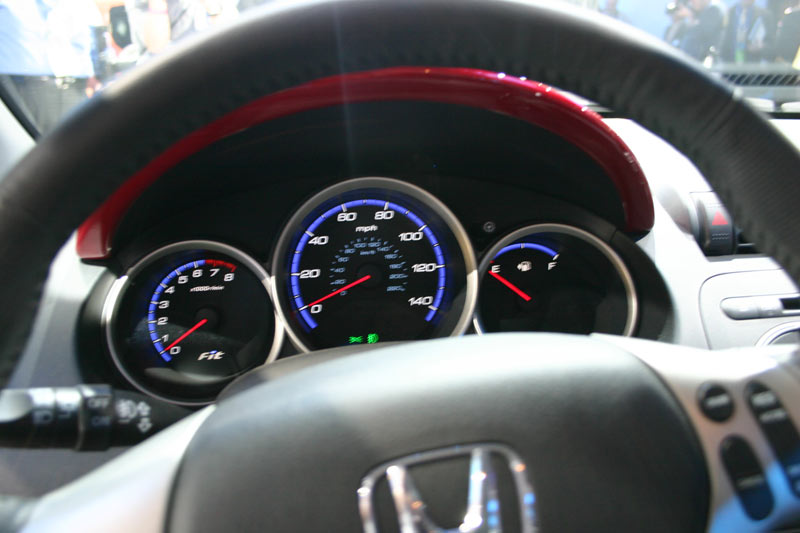
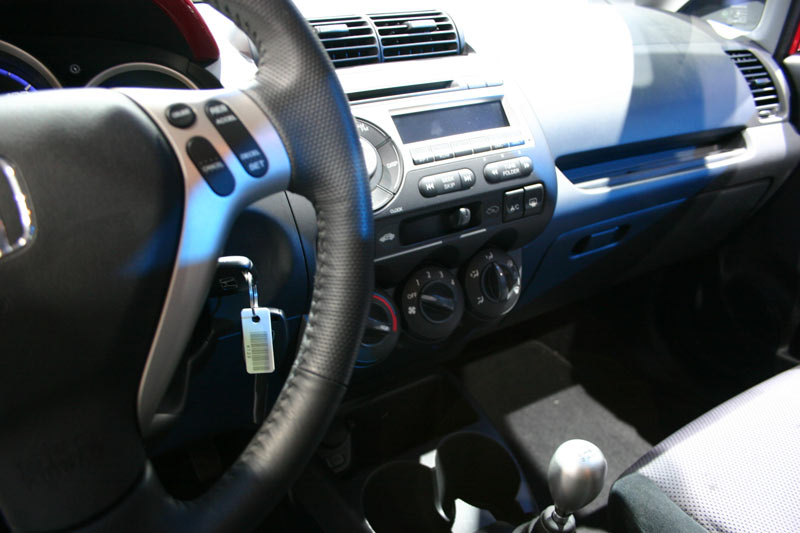
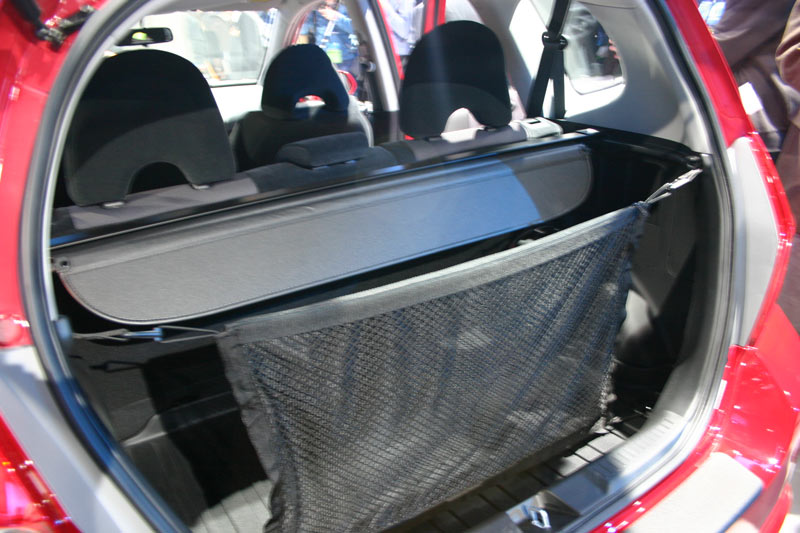
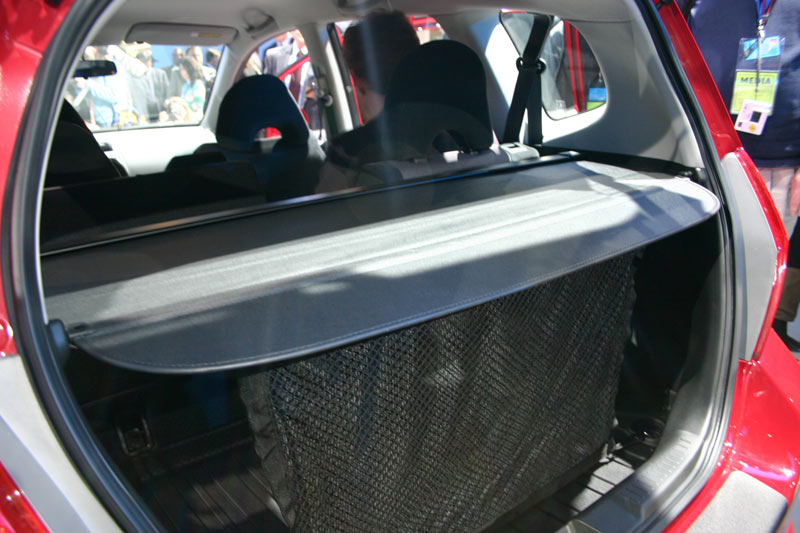
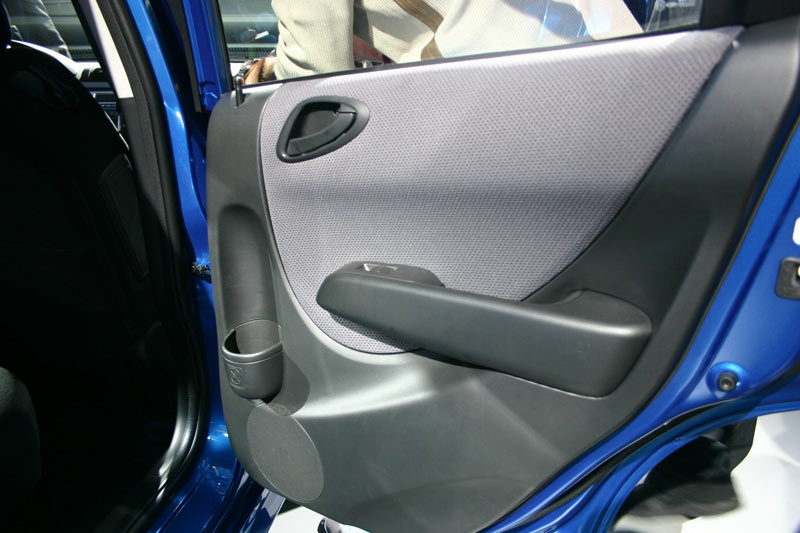
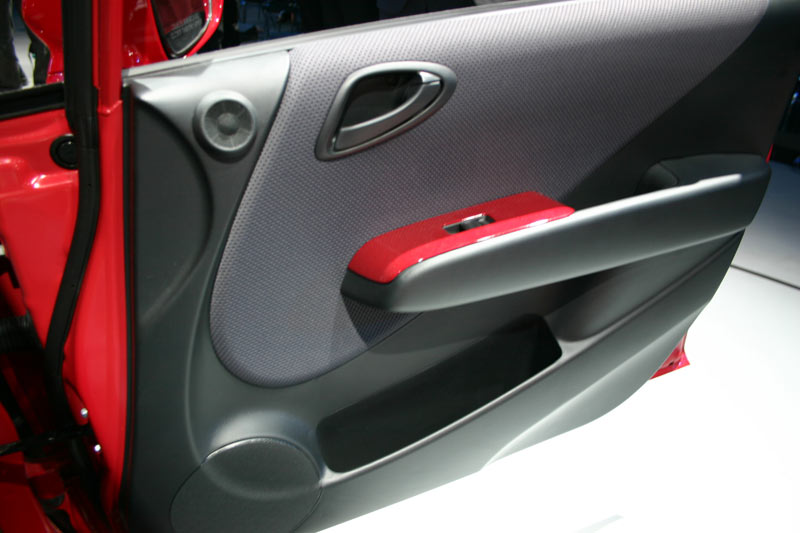
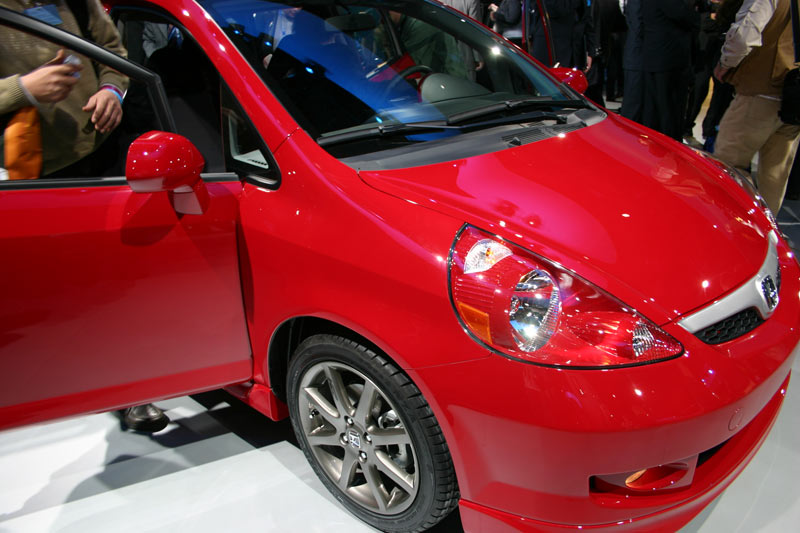
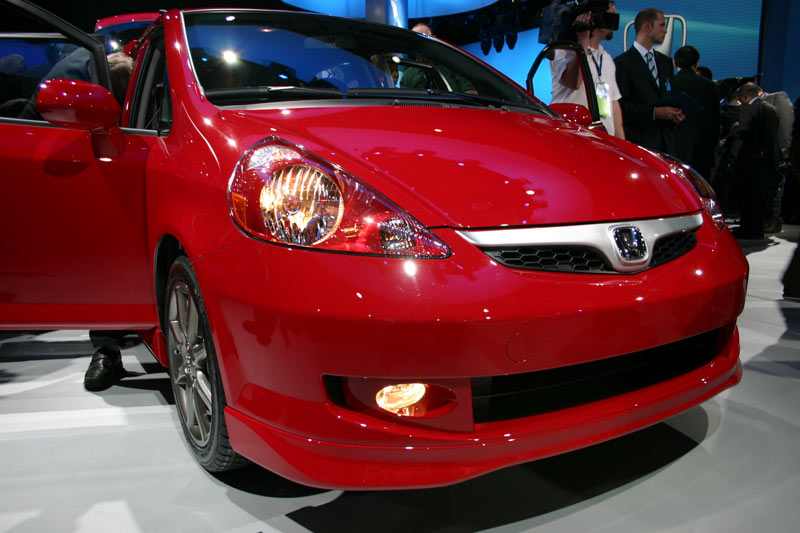
=======================END====================

shuaiwanguk于2006-01-24写道:
罪过,手太快
早知道当小偷拉 :-)
好贴~!~月亮辛苦了~!~
